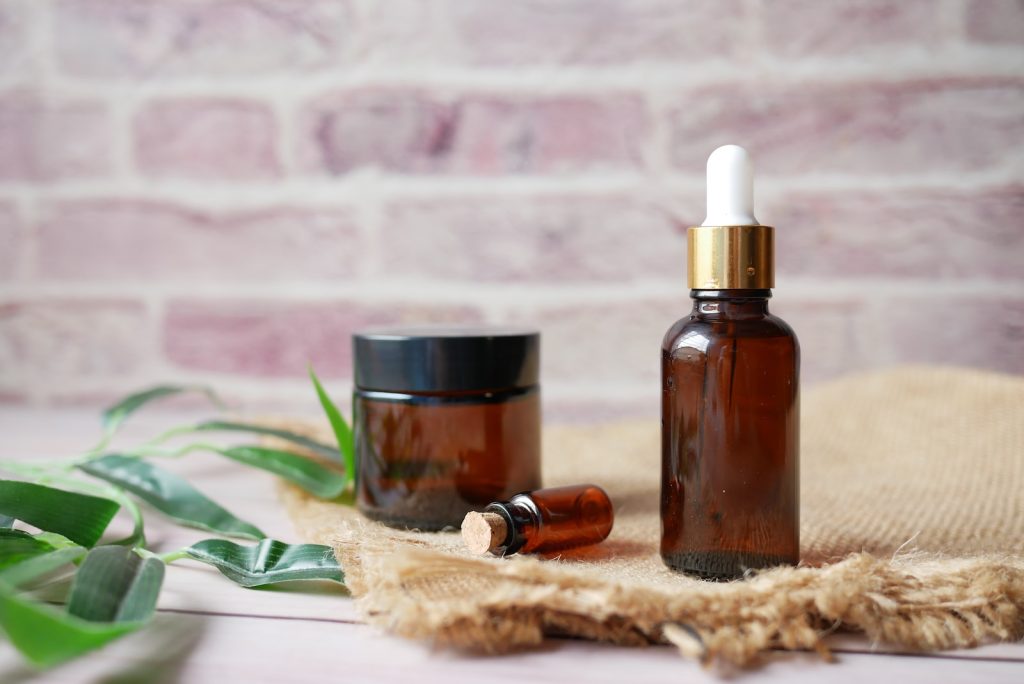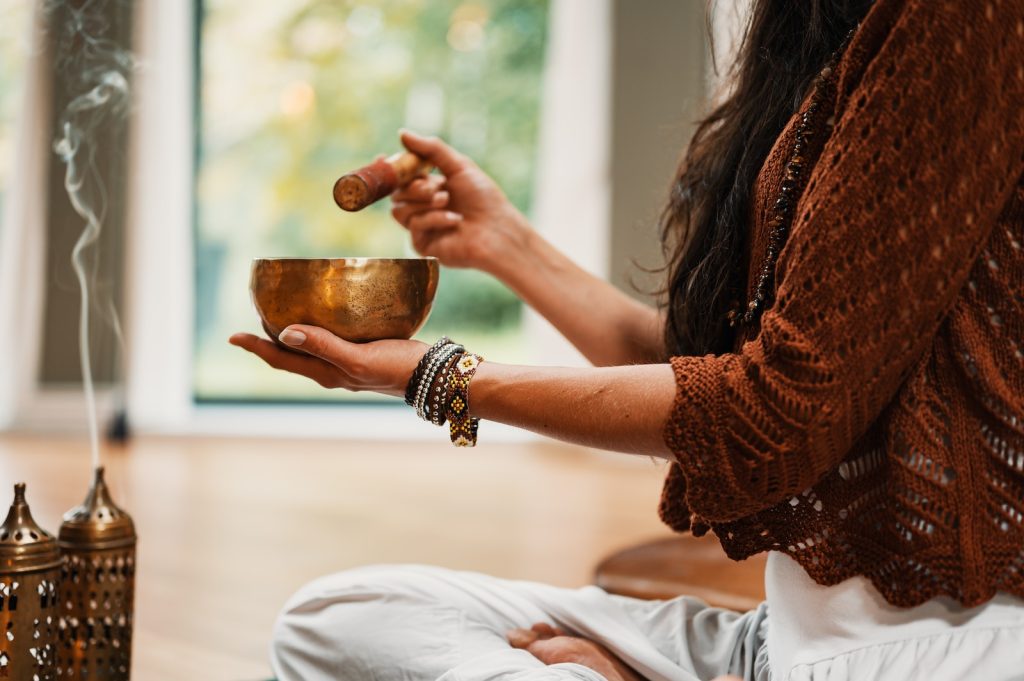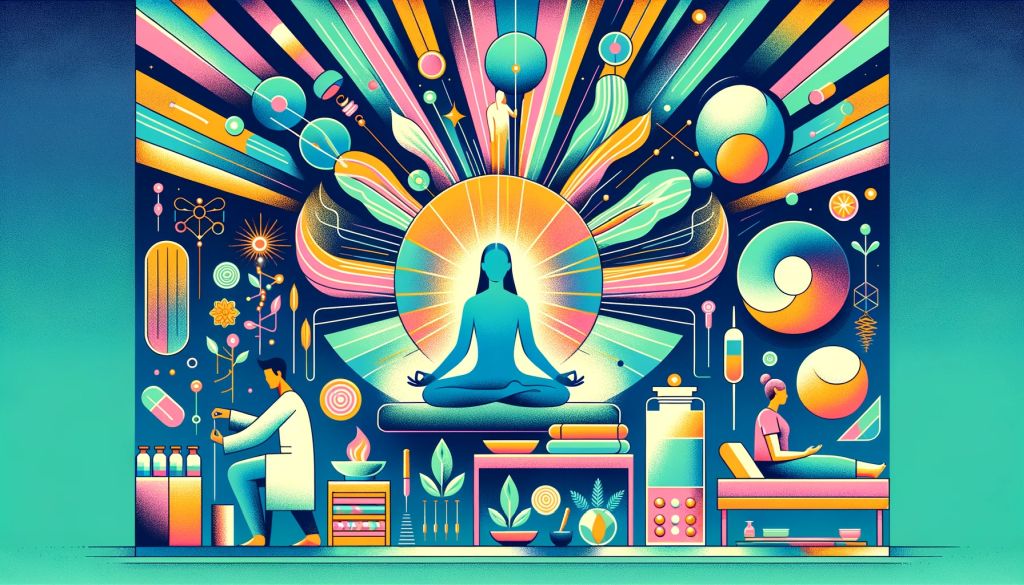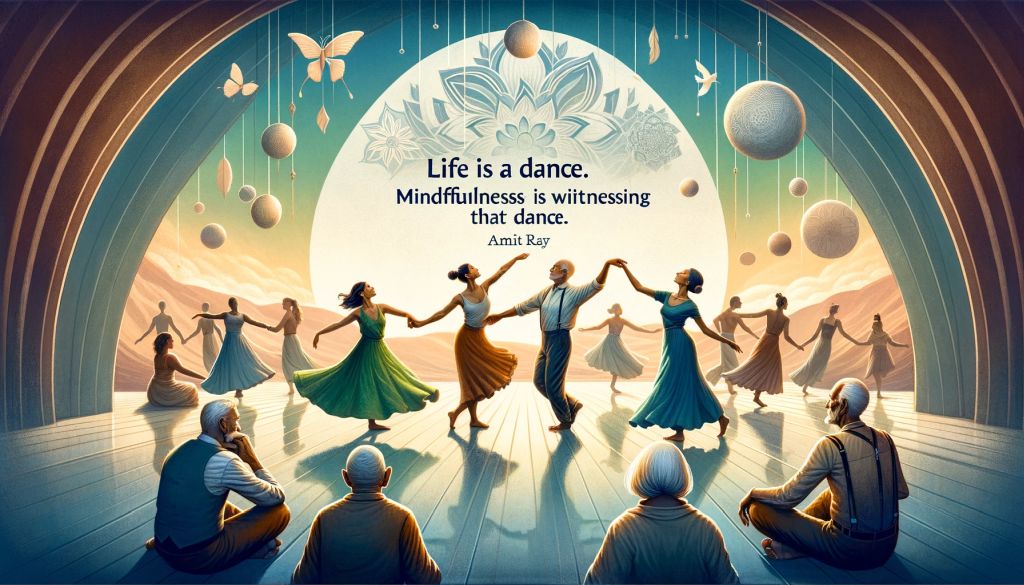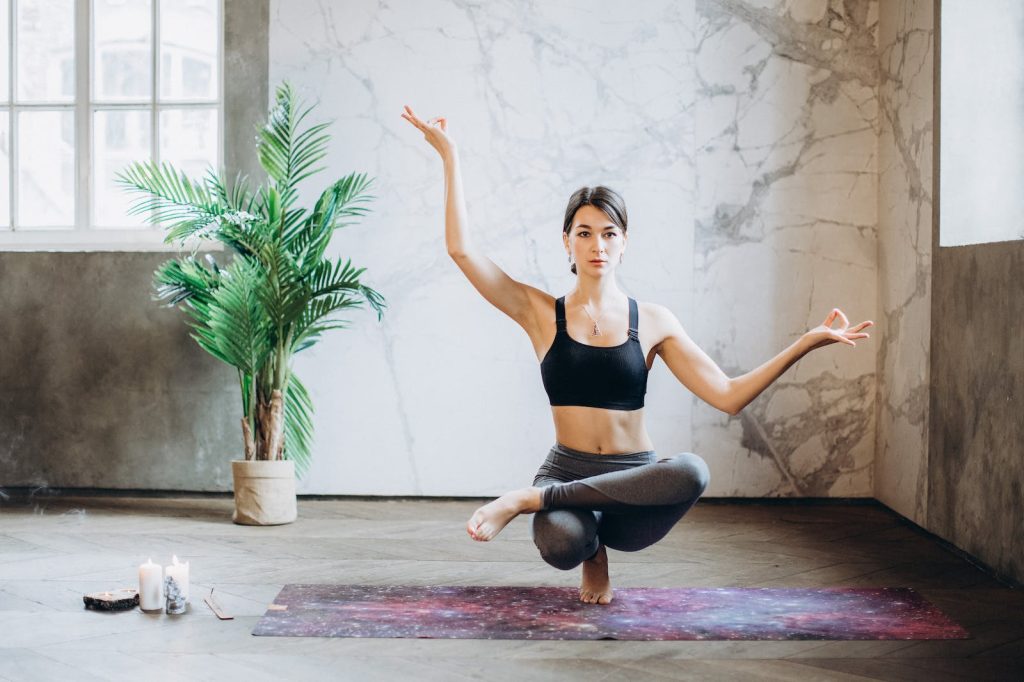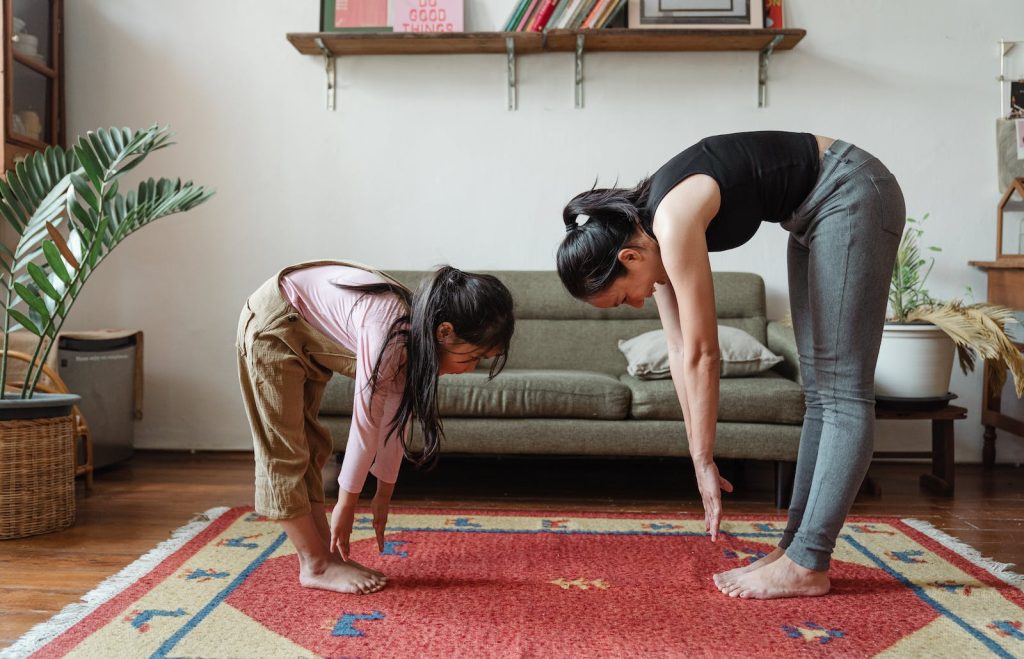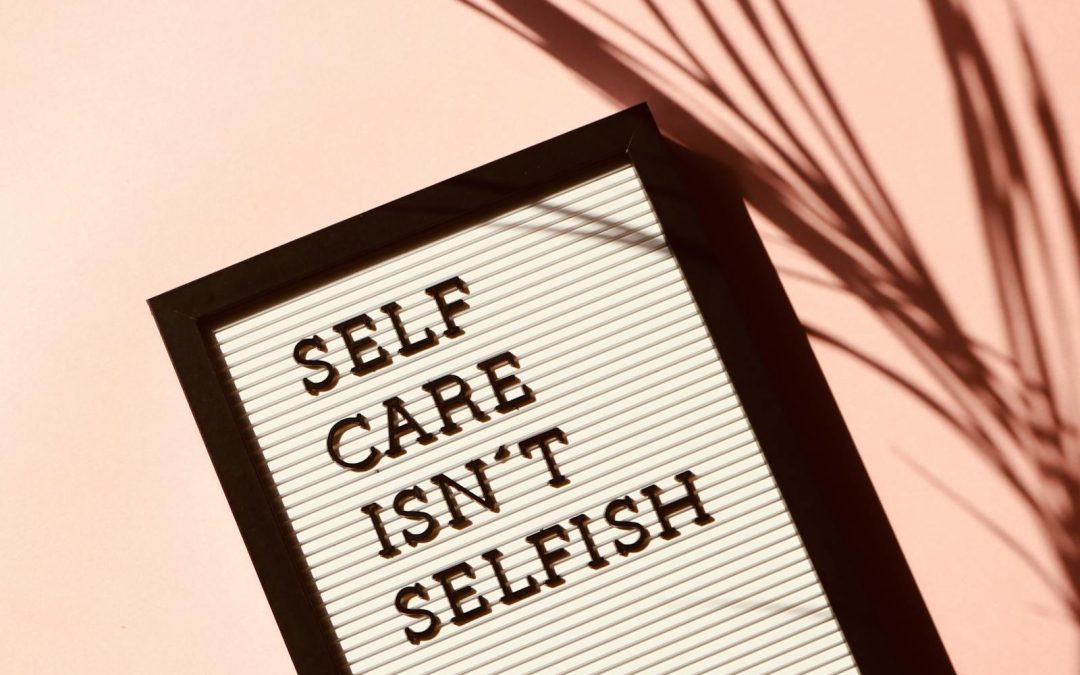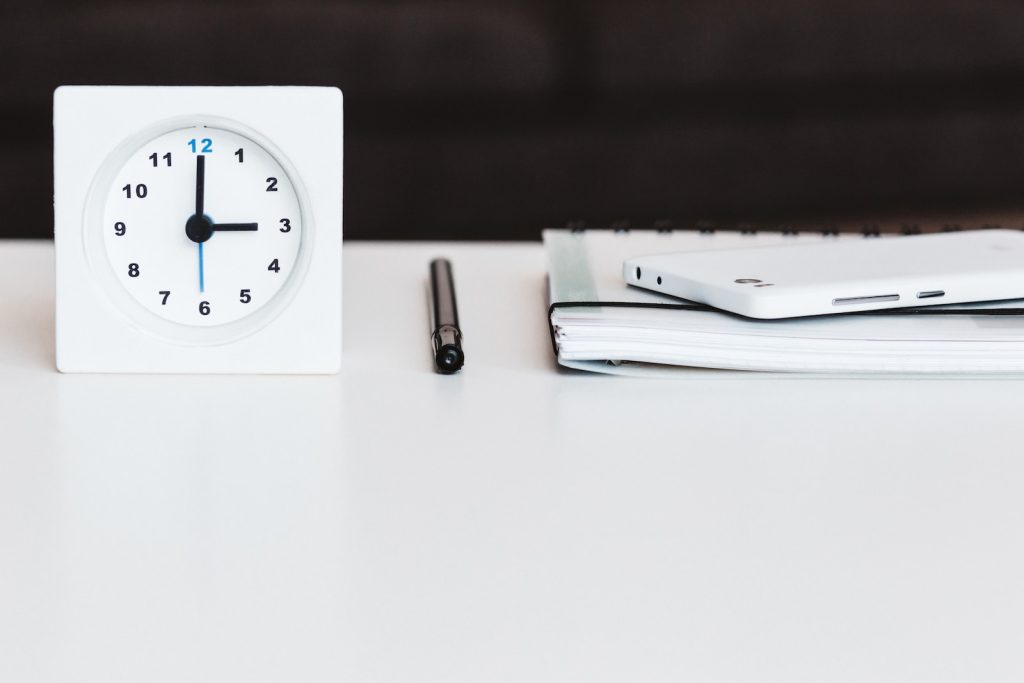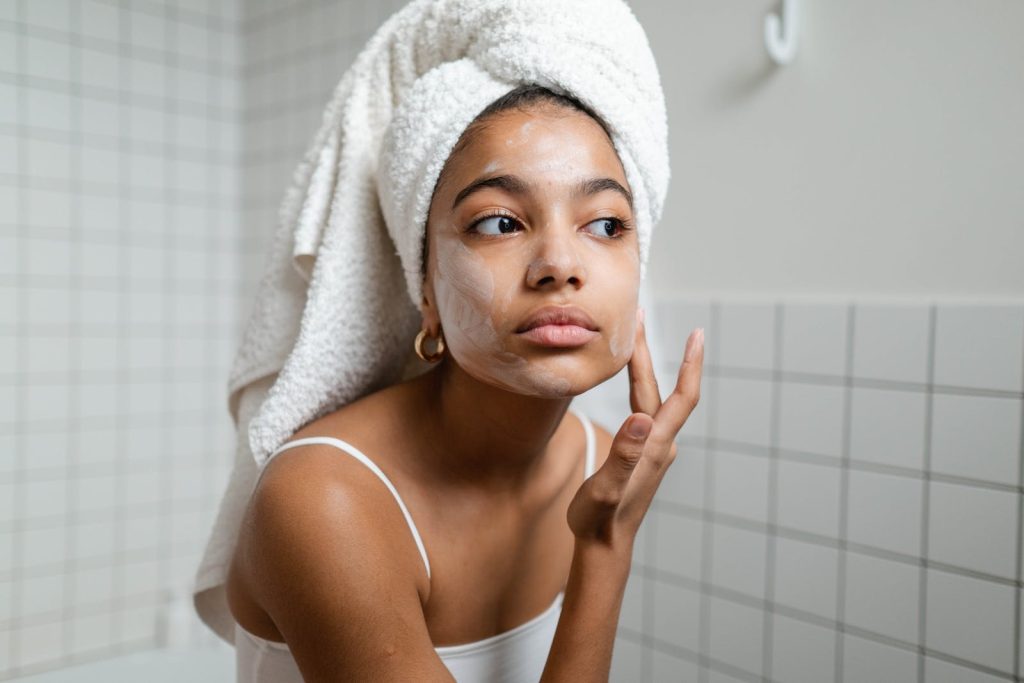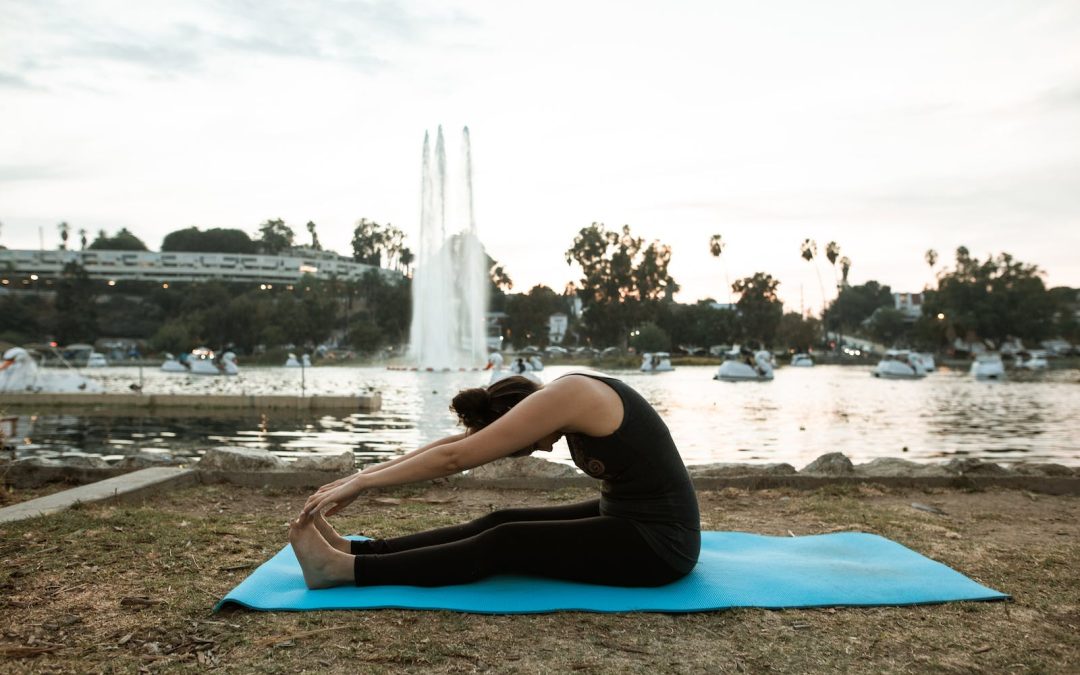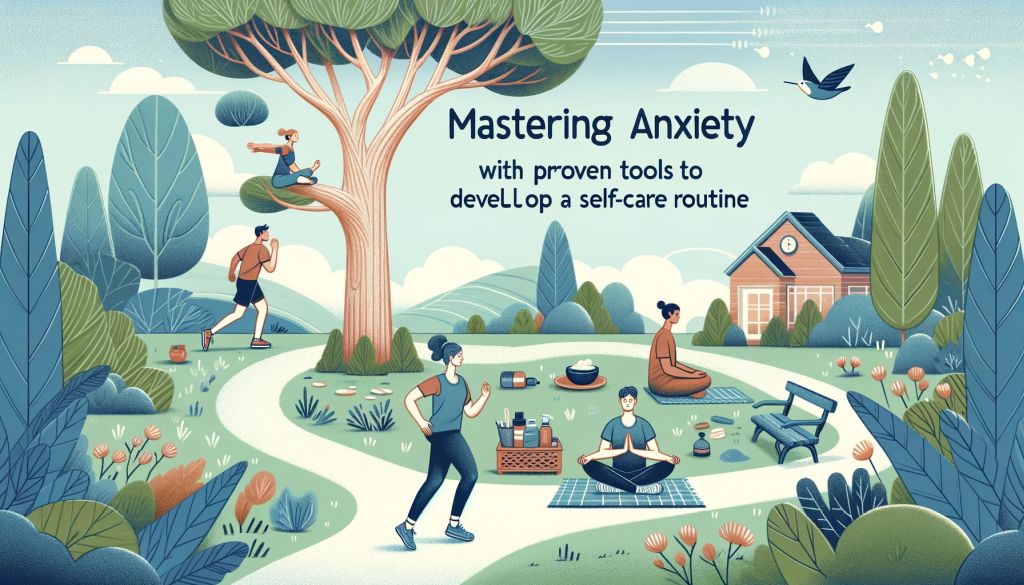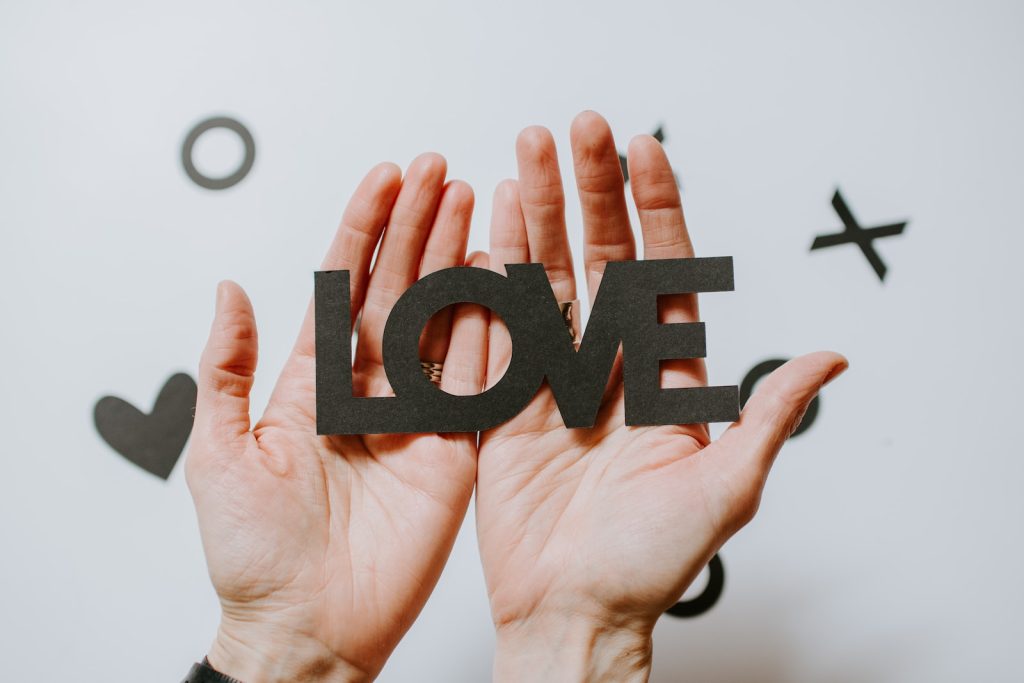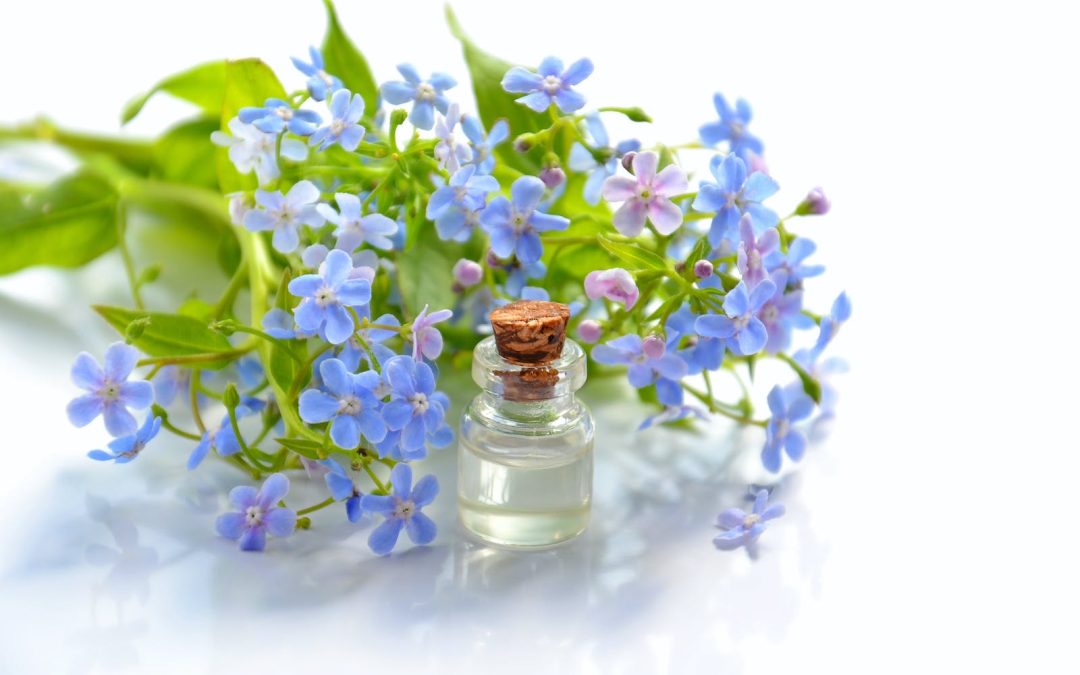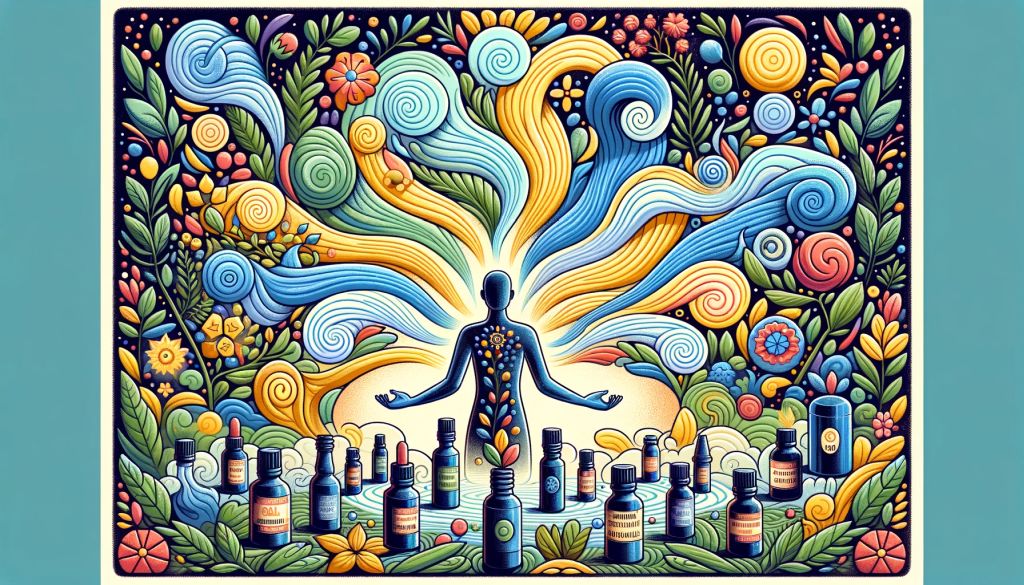
by Health And Healing AI | Dec 14, 2023 | Natural Remedies
Embark on a transformative journey to wellness as we unveil the secrets of unconventional healing.

Finding Balance – Embracing the Unconventional for Optimal Health. Photo by Clemens van Lay
Unveil the Secrets of Unconventional Healing
Unveiling the Secrets of Unconventional Healing: As a child, I watched my grandmother mix herbs in her kitchen, her wisdom etched in every wrinkle.
Decades later, I found myself in a modern city clinic, yet the pills didn’t heal me like her concoctions did.
This journey led me to discover the secrets of unconventional healing.
The results are astounding in a world where ancient knowledge meets modern science. In this article, I’ll share these secrets.
You’ll learn how to harness the power of nature and your own body to heal in ways you never imagined. Today, let’s embark on a health journey beyond the pill bottle.
Unconventional Healing Techniques You Haven’t Tried Yet – Exploring Alternative Paths to Wellness

Nature’s Remedies – The Natural Path to Wellness. Photo by Conscious Design
Exploring Unconventional Healing for Vibrant Health
Unveiling the Secrets of Unconventional Healing: Are you tired of traditional healing methods that don’t work for you? Have you considered trying unconventional healing techniques?
These techniques may seem strange or unfamiliar initially, but they have proven effective for many people.
This article will introduce you to five unconventional healing techniques you may not have tried yet.
The first technique we will discuss is equine therapy. This therapy involves interacting with horses to promote emotional healing and growth.
It can be beneficial for those struggling with mental health issues or trauma. Research has shown that equine therapy can reduce symptoms of anxiety, depression, and PTSD.
If you want to try this therapy, look for a reputable equine therapy center near you.
Another unconventional healing technique is sound therapy. This therapy involves using sound vibrations to promote healing and relaxation.
It can be done with instruments like singing bowls, gongs, tuning forks, or with your voice. Sound therapy has been shown to reduce stress, anxiety, and pain.
If you’re curious about this technique, you can try it by attending a sound bath or finding a sound therapist.
Energy Healing Practices – Secrets of Unconventional Healing
Energy healing practices might be worth exploring if you’re open to alternative healing modalities.
Unveiling the Secrets of Unconventional Healing: Here are two unconventional techniques that you might not have tried yet:
Reiki Energy Work
Reiki is a Japanese healing technique that involves the transfer of energy from the practitioner’s palms to the patient’s body to promote relaxation, reduce pain, and accelerate healing.
It’s based on the idea that an unseen “life force energy” flows through us and is what causes us to be alive.
If one’s life force energy is low, we are more likely to get sick or feel stressed; if it’s high, we are more capable of being happy and healthy.
During a Reiki session, the patient lies down wholly clothed while the practitioner places their hands on or near the patient’s body in a series of hand positions.
The practitioner then channels the energy to the patient, promoting deep relaxation and well-being.
Quantum-Touch Therapy
Unveiling the Secrets of Unconventional Healing: Quantum-Touch Therapy is another energy healing technique that uses hands to amplify and direct the body’s natural healing abilities.
It’s based on the idea that the body can heal but needs help.
During a Quantum-Touch Therapy session, the practitioner uses breathing and body awareness techniques to raise their energy level. T
hey then place their hands on or near the patient’s body, and the energy from the practitioner’s hands is transferred to the patient’s body.
It can help to reduce pain, speed up healing, and improve overall well-being.
Reiki and Quantum Touch Therapy are non-invasive, gentle, and safe techniques that can complement traditional medical treatments.
These two techniques are a great place to start if you’re curious about energy healing practices.
Sound Therapy Techniques _ Unveiling the Secrets of Unconventional Healing
You might want to try sound therapy if you’re looking for a new way to improve your mental and emotional well-being.
This holistic healing technique uses sound vibrations to help reduce stress, anxiety, and other negative emotions.
Here are two sound therapy techniques you might want to consider:
Tibetan Singing Bowls
Tibetan singing bowls have been used for centuries in Tibetan culture as a form of meditation and healing.
These bowls are made of metal and produce a unique sound to help calm your mind and body.
During a Tibetan singing bowl session, the bowls are played in a specific sequence to create a sense of harmony and balance.
The vibrations from the bowls can help reduce stress and anxiety, improve your mood, and promote a sense of well-being.
Binaural Beats Meditation
Binaural beats meditation is a type of meditation that uses sound frequencies to help induce a state of relaxation.
During a binaural beats meditation session, you listen to two different sound frequencies in each ear.
The difference between the two frequencies creates a third frequency in your brain, which can help you relax and reduce stress.
This technique can help improve mood, reduce anxiety, and promote sleep.
Finding a qualified practitioner who can guide you through the process is essential if you want to try sound therapy techniques.
You may also want to consider investing in your Tibetan singing bowl or binaural beats meditation tracks to use at home.
Aromatherapy and Essential Oils

The Road Less Traveled – Unconventional Healing Techniques You Must Explore. Photo by Towfiqu barbhuiya
Unveiling the Secrets of Unconventional Healing: If you’re looking for a natural way to promote wellness, aromatherapy and essential oils are worth considering.
Aromatherapy is using scents to improve physical, emotional, and mental well-being. Essential oils are concentrated plant extracts that are used in aromatherapy.
Here are two ways you can use aromatherapy and essential oils to improve your health:
Emotional Release with Scents
Certain scents can help you feel more relaxed, focused, or energized.
For example, lavender oil is known for its calming properties, while peppermint oil can help improve mental clarity.
You can create a calming atmosphere in your home or office by using essential oils for aromatherapy.
You can also use essential oils during meditation or yoga to help you relax and focus.
Creating Personalized Aromatherapy Blends
One of the benefits of aromatherapy is that you can create personalized blends that meet your specific needs.
For example, if you’re feeling stressed, you can blend lavender, bergamot, and ylang-ylang essential oils to help you relax.
If you’re tired, you can blend peppermint, rosemary, and lemon essential oils to help you feel more energized.
You can experiment with different scents and blends until you find the best ones.
| Essential Oils | Properties |
| Lavender | Calming |
| Peppermint | Mental clarity |
| Bergamot | Uplifting |
| Ylang-ylang | Relaxing |
| Rosemary | Energizing |
| Lemon | Refreshing |
In conclusion, aromatherapy and essential oils are natural and effective ways to promote wellness.
You can create a more balanced and harmonious life by using scents to improve your physical, emotional, and mental well-being.
Movement-Based Therapies

Crystal healing therapy for spiritual and physical balance. Photo by Kristijan Arsov
If you’re looking for unconventional ways to heal your mind and body, you might want to consider movement-based therapies.
These therapies use different types of movements to promote health and wellness, and they can be a great addition to your self-care routine.
Here are two types of movement-based therapies you might want to try:
Qigong for Inner Balance
Qigong is a traditional Chinese practice that involves slow, gentle movements, deep breathing, and meditation.
It’s often described as a moving meditation, and it’s believed to promote balance and harmony in the body and mind.
Qigong has been shown to have many health benefits, including reducing stress, improving balance and flexibility, and boosting the immune system.
To try Qigong, you can find classes at many community centers, yoga studios, and martial arts schools.
You can also find instructional videos online or in books. Qigong is a low-impact practice that suits people of all ages and fitness levels.
Dance Movement Therapy
Dance movement therapy is a form of psychotherapy that uses dance and movement to help people express their emotions and improve their mental health.
It’s based on the idea that the body and mind are interconnected and that movement can be a powerful tool for healing.
In dance movement therapy, you’ll work with a trained therapist to explore your feelings and emotions through movement.
You might be asked to improvise movements or follow specific choreography depending on your needs and goals.
Dance movement therapy is effective for a wide range of mental health issues, including anxiety, depression, and trauma.
If you want to try dance movement therapy, you can find a qualified therapist through the
American Dance Therapy Association or other professional organizations. You can also find classes and workshops at some dance studios and community centers.
Movement-based therapies can be a fun and effective way to improve physical and mental health.
Whether you try Qigong, dance movement therapy, or another type of movement-based therapy, you might be surprised at how much it can help you feel better.
Herbal and Plant Medicine

Vibrant-illustration-of-healing-plants-and-flowers
If you’re seeking unconventional healing techniques, herbal and plant medicine might be the answer.
Many cultures have been using plants for medicinal purposes for centuries. Here are two types of herbal medicine that you might find helpful.
Adaptogenic Herbs for Stress Relief
Unveiling the Secrets of Unconventional Healing: Adaptogenic herbs are a type of herb that can help your body adapt to stress.
They can help reduce anxiety, improve mood, and increase energy levels. Some examples of adaptogenic herbs include ashwagandha, rhodiola, and holy basil.
You can take adaptogenic herbs in various forms, such as teas, capsules, or tinctures. Talking to your doctor before taking any new herbs is essential, especially if you take other medications.
Ayurvedic Herbal Remedies
Ayurvedic medicine is a traditional medicine from India that uses herbal remedies to treat various ailments. Some common Ayurvedic herbs include turmeric, ginger, and ashwagandha.
Ayurvedic herbal remedies are often used to treat digestive, skin, and respiratory issues.
They can be taken in various forms, such as teas, powders, or capsules.
Talking to your doctor before taking any new herbs is essential, especially if you take other medications.
Overall, herbal and plant medicine can be a great way to complement traditional medicine.
However, it’s essential to research and talk to your doctor before trying new herbs or supplements.
Color and Light Therapy

Person-practicing-mindfulness-in-serene-garden.
If you’re looking for unconventional healing techniques, color and light therapy might be just what you need.
This therapy uses colors and light to treat physical and mental health conditions. Here are two types of color and light therapy that you might want to try:
Chromotherapy Sessions
Chromotherapy, or color therapy, is a holistic healing method that uses colors to balance the body’s energy centers or chakras.
Each color is believed to affect the body and mind differently.
For example, blue is calming and soothing, while yellow is believed to be energizing and uplifting.
During a chromotherapy session, you’ll be exposed to different colors of light through colored lamps, filters, or crystals.
You might also be asked to wear colored glasses or lay on a colored mat. The therapist will guide you through the session and explain the meaning of each color.
Bioptron Light Therapy
Bioptron light therapy is a phototherapy that uses polarized light to stimulate the body’s natural healing processes.
The light is emitted through a unique lamp that filters harmful UV rays.
The therapy is non-invasive and painless and can treat various conditions, including pain, inflammation, and skin problems.
During a Bioptron light therapy session, you’ll sit or lie in front of the lamp for some time. The therapist will adjust the intensity and duration of the light based on your needs.
You might also be given a special cream or gel to apply to your skin before the session to enhance the effects of the light.
Color and light therapy might sound unconventional, but they have been used for thousands of years in traditional healing practices.
If you’re curious about these therapies, talk to a qualified practitioner to see if they’re right for you.
Mindfulness and Visualization

Colorful-depiction-of-diverse-healing-practices.
If you’re looking for alternative healing techniques, mindfulness and visualization practices could be the perfect fit.
These techniques can help you stay present and focused and even help you manage stress and anxiety.
Guided Imagery Techniques
Guided imagery is a visualization that involves using your imagination to create a mental image of a specific situation or scenario.
This technique can help you relax, reduce stress, and even manage pain.
To get started with guided imagery, find a quiet place where you won’t be interrupted.
Close your eyes and take a few deep breaths to help you relax. Then, imagine yourself in a peaceful and calming environment, such as a beach or a forest.
Try to use all your senses to create a vivid mental image of the scene.
Mindfulness Meditation Practices
Mindfulness meditation is another technique that can help you stay present and focused.
This technique involves paying attention to your thoughts and feelings without judgment.
To practice mindfulness meditation, find a quiet place where you won’t be interrupted. Sit in a comfortable position and focus on your breath.
Pay attention to each inhale and exhale, and let your thoughts come and go without judgment.
There are many different types of mindfulness meditation practices, so feel free to experiment until you find a technique that works for you.
Some people find it helpful to use guided meditations or mindfulness apps to get started.
Frequently Asked Questions
What are some lesser-known holistic healing techniques?
Holistic healing is an approach that considers the whole person, including their mind, body, and spirit when addressing health issues.
Some lesser-known holistic healing techniques include sound healing, breathwork, and aromatherapy.
Sound healing uses different frequencies and vibrations to help balance the body’s energy.
Breathwork involves breathing exercises that can help reduce stress and promote relaxation. Aromatherapy uses essential oils to promote healing and relaxation.
Can you recommend any unique energy therapy practices?
Energy therapy is an alternative medicine that uses energy to promote healing.
Some unique energy therapy practices include Reiki, acupuncture, and crystal healing. Reiki involves the use of gentle touch to channel energy and promote healing.
Acupuncture involves using needles to stimulate specific points in the body to balance energy.
Crystal healing involves using different crystals to promote healing and balance energy.
What are some effective spiritual healing methods not commonly discussed?
Spiritual healing involves using spiritual practices to promote healing and well-being.
Some effective spiritual healing methods not commonly discussed include shamanic healing, chakra healing, and past life regression.
Shamanic healing involves connecting with the spiritual world to promote healing. Chakra healing involves using different techniques to balance the body’s energy centers.
Past life regression involves exploring past lives to promote healing and self-discovery.
Are there any unconventional courses for learning healing modalities?
Yes, there are many unconventional courses for learning healing modalities. Some examples include online courses, workshops, and retreats.
These courses can cover a variety of healing modalities, including energy healing, herbalism, and meditation.
Researching and finding a course that aligns with your interests and goals is essential.
How can the subconscious mind be involved in alternative healing practices?
The subconscious mind plays a significant role in alternative healing practices.
Hypnotherapy and guided imagery can help access the subconscious mind to promote healing.
Hypnotherapy involves inducing a trance-like state to access the subconscious mind and promote healing.
Guided imagery uses visualization techniques to access the subconscious mind and promote healing.
What natural healing methods are considered the most potent and underutilized?
Some natural healing methods considered the most potent and underutilized include herbal medicine, homeopathy, and Ayurveda.
Herbal medicine involves using plants and herbs to promote healing and well-being.
Homeopathy involves using highly diluted substances to promote healing. Ayurveda is a traditional Indian system of medicine that uses a holistic approach to promote health and well-being.
These natural healing methods can be highly effective, but it’s essential to consult a qualified practitioner before using them.
Wrap-Up

Unlocking the Power of Mind-Body Connection in Healing. Photo by NoName_13
“Beyond Traditional Medicine: Unveiling the Secrets of Unconventional Healing” takes readers on a transformative journey into the realm of alternative and holistic approaches to wellness.
This illuminating exploration goes beyond conventional medical practices, unveiling the hidden gems of unconventional healing techniques that have the potential to revolutionize one’s well-being.
In this captivating journey, you will discover the power of ancient wisdom, holistic therapies, and mind-body connections that form the foundation of unconventional healing.
We delve into practices like acupuncture, herbal remedies, energy healing, and more, offering insights into how these methods can enhance your vitality and overall health.
By embracing these unconventional healing secrets, you’ll gain a deeper understanding of the harmony between the body, mind, and spirit, paving the way for a life of wellness and balance.
Join us on this enlightening path as we uncover the untapped potential of unconventional healing, transcending the boundaries of traditional medicine to reveal a world of health and vitality you never knew existed.
A Call to Action
“Ready to embark on your journey to holistic wellness? Start exploring the secrets of unconventional healing today.
Join us in embracing ancient wisdom and unlocking the pathways to optimal health. Don’t wait – take the first step towards a more vibrant and balanced life now.”
P. S. “Remember, your well-being is your most valuable asset. Discover the transformative power of unconventional healing methods and watch as your life unfolds with newfound vitality and harmony. Take that leap into a healthier you today!”

by Health And Healing AI | Dec 12, 2023 | Mindfulness
Dive into the Transformative Power of Mindfulness, exploring its profound Impact on Health and Wellbeing.

Serene landscape with focused mindfulness practitioners, blending modernity and tranquility.
I was a skeptic. I thought mindfulness was just a trendy buzzword, a fad that would soon fade away.
I didn’t see how paying attention to my breath or noticing the sensations in my body could make any difference in my life.
I was too busy, stressed, and distracted by the endless demands of work and family.
I had no time for such nonsense. But then I stumbled upon some research that changed my mind.
It turns out that mindfulness is not only a powerful tool for reducing stress, anxiety, and depression but also for enhancing memory, creativity, and health.
And the best part is, anyone can do it anytime, anywhere. All it takes is a few minutes daily and a willingness to be curious and open.
I will also give you some practical tips and exercises you can start doing right now to experience the benefits of mindfulness for yourself.

Tranquil-scene-life-as-dance-mindfulness-witness.
“Life is a Dance. Mindfulness is witnessing that dance.” – Amit Ray
My take on this quote
Life is an Improvisation. Amit Ray’s quote beautifully encapsulates life’s fluidity and unpredictability, likening it to a dance.
In my perspective, life’s dance is less of a choreographed routine and more of an improvisation where mindfulness allows us to observe and adapt to its rhythm.
This approach helps us embrace spontaneity and find joy in unexpected moments, teaching us to be resilient and adaptable.
We become active participants in the dance of life, choreographing our steps as we go along. Embrace the spontaneous choreography of life.
H3 What this means for you
Navigate life with graceful adaptability. Applying this interpretation to your life means viewing each day as a new dance, an opportunity to create unique steps and movements.
It encourages you to be present in every moment, acknowledging and adapting to life’s changing rhythms.
This mindset helps develop resilience and an open heart, making you better equipped to handle life’s surprises.
It’s about finding harmony in the chaos and learning to move gracefully through the highs and lows. Let your life dance be fluid, vibrant, and beautifully yours.
The Mind-Body Connection – as a Path to Better Health

Close-up image of a peaceful meditation session, highlighting mindfulness techniques for mental clarity. Photo by Elina Fairytale
Mindfulness has been the subject of extensive research, with numerous studies highlighting its potential health benefits.
From reducing stress and anxiety to improving focus and cognitive function, mindfulness has shown promise in enhancing overall well-being.
The science behind mindfulness suggests that it can positively impact mental and physical health, making it a valuable tool for individuals seeking to cultivate a greater sense of balance and resilience.
As research in this field continues to evolve, the depth of understanding regarding the health benefits of mindfulness is likely to expand, offering further insights into its profound effects on the human mind and body.
Exploring the ‘Why’ Behind Mindfulness – Unveiling Its Science and Impact on Health.

Mindfulness in Daily Life: Practical Tips for Integrating It Into Your Routine.
Mindfulness is a powerful tool to enhance your daily life and overall well-being.
The practice involves actively focusing on the present moment, eliminating distractions, and being aware of your thoughts, feelings, and surroundings.
By incorporating mindfulness into your routine, you’ll be better equipped to handle stress, anxiety, and emotional ups and downs.
Meditation is a popular method for practicing mindfulness, allowing you to explore and embrace the present moment without judgment.
When you meditate, you’re allowing your brain to pause, reflect, and revitalize. A growing body of evidence supports the numerous health benefits of mindfulness and meditation.
It includes improvements in mental health, emotional stability, and physical well-being.
Diving deeper into the science of mindfulness, we’ll uncover how this practice impacts the brain, body, and emotions.
From reducing stress to boosting immune health, the potential benefits of mindfulness are vast and well worth exploring in your own life.
Understanding Mindfulness
Historical Context and Eastern Traditions
Mindfulness has its roots in Eastern traditions, notably Buddhism. Ancient practices focused on cultivating awareness and attention to the present moment to understand the nature of reality and attain enlightenment.
You might be familiar with meditation techniques like Vipassana, which originated from these teachings. In many ways, mindfulness has always been a bridge between the spiritual and physical worlds.
Mindfulness and Mental Training
The essence of mindfulness is becoming fully aware of your thoughts, feelings, and bodily sensations in the present moment.
It involves practicing attention and non-judgmental observation. It’s almost like training your mental “muscles” to stay present and focused. Benefits of this mental training include:
- Improved well-being
- Reduced stress and anxiety
- Enhanced focus and concentration
Scientists have found that mindfulness-based practices can positively impact the brain in several ways, possibly even in as little as eight weeks of practice.
Secular Adaptation and Practice
In recent years, mindfulness has been adapted into secular practices, emphasizing its practical mental and physical health benefits.
As a result, mindfulness-based approaches have been integrated into therapy and wellness programs for managing various conditions such as depression, chronic pain, and addiction.
You don’t have to adopt any specific religious belief to benefit from mindfulness, and many resources are available to learn about and practice mindfulness.
Some popular secular mindfulness practices include:
- Mindfulness-Based Stress Reduction (MBSR)
- Mindfulness-Based Cognitive Therapy (MBCT)
- Yoga, Tai Chi, and other movement-based mindfulness practices
By embracing mindfulness, you can enhance your overall well-being and gain deeper insight into your mind and experiences.
So, why not try it and see how it impacts your health and happiness?
Scientific Research on Mindfulness
Neuroimaging and the Brain
Recent findings in neuroimaging studies offer ample insight into the changes in the brain when practicing mindfulness.
One of the impressive outcomes is the increase in cortical thickness observed in specific regions associated with attention, emotional regulation, and self-awareness.
Enhanced cortical thickness increases the capability to process emotions and perform cognitive tasks efficiently.
Moreover, mindfulness practices have been shown to impact the amygdala – a region related to stress and emotional processing.
As you develop mindfulness, your amygdala may shrink, leading to better stress management and emotional regulation 1.
Psychological Studies and Evidence
The American Psychological Association has endorsed multiple benefits of mindfulness, such as improved emotional well-being and mental health.
Some of these benefits encompass:
- Reduced rumination and overthinking
- Enhanced management of stress
- Increased emotional regulation
- Boosted cognitive abilities
A wealth of psychological studies has demonstrated that mindfulness can help decrease anxiety levels and alleviate depression symptoms.
Furthermore, mindfulness training has been proven to strengthen your immune system and aid in sleeping better 2.
Analysis of Randomized Controlled Trials
Randomized controlled trials (RCTs) provide rigorous evidence of the effectiveness of mindfulness-based interventions (MBIs).
One such systematic review analyzed over 20 RCTs in 2011, revealing improvements in overall mental health and a reduced risk of relapse from depression 3.
Moreover, a comprehensive review of MBIs found that they were effective in improving numerous biopsychosocial conditions, including:
- Depression
- Anxiety
- Stress
- Insomnia
- Addiction
- Psychosis
- Pain
- Hypertension
- Weight control
- Cancer-related symptoms
- Prosocial behaviors
These results strongly support incorporating mindfulness practices into your daily life for optimal health and well-being 4.
Health Benefits of Mindfulness
Mental Health Improvements
Practicing mindfulness can be a game-changer for your mental health. When you engage in mindfulness meditation, you may experience a reduction in anxiety and depression.
It helps you focus on the present moment, allowing you to detach from the constant whirlwind of thoughts that can sometimes feel overwhelming.
Mindfulness techniques also promote self-awareness and emotional regulation, essential for maintaining a positive mental state.
Here are some mental health benefits you might enjoy:
- Stress reduction: Mindfulness helps you handle stress better and reduces its impact on your life.
- Enhanced focus: Practicing mindfulness strengthens your concentration and engagement with tasks.
- Emotional resilience: Embracing mindfulness can improve your ability to cope with difficult emotions and situations.
Physical Health Advantages
Practicing mindfulness doesn’t just provide mental health benefits; it can also improve your physical well-being.
For example, studies have shown that mindfulness boosts your immune system, helping your body to defend itself against illness better.
Additionally, mindfulness meditation may help lower blood pressure, improve sleep, and reduce chronic pain.
Some physical health benefits include:
- Pain management: Mindfulness can change your interaction with pain, allowing you to develop healthier coping strategies.
- Improved sleep: Incorporating mindfulness before bed can lead to more restful and higher-quality sleep.
- Lower blood pressure: Regular mindfulness practice has been linked to reduced blood pressure, promoting better heart health.
Long-Term Wellness
It’s important to remember that the advantages of mindfulness extend beyond the immediate moment.
Regular practice can lead to lasting changes in your brain structure and function, contributing to overall well-being.
Some research indicates that positive brain changes can occur in as little as eight weeks of consistent practice.
Incorporating mindfulness techniques into your daily routine can improve mental, emotional, and physical health in the long run.
Integrating mindfulness into your life opens the door to enhanced mental health, physical well-being, and long-term wellness.
Embrace the present moment and give yourself the gift of mindfulness.
Mindfulness Application in Clinical Settings
In this section, let’s explore how mindfulness can be used in clinical settings to improve mental health and well-being.
Critical interventions include Mindfulness-Based Stress Reduction (MBSR) and Mindfulness-Based Cognitive Therapy (MBCT), effectively addressing various health conditions.
Mindfulness-Based Stress Reduction (MBSR)
MBSR is an 8-week program to help you cultivate mindfulness skills and reduce stress.
With its roots in meditation practices, MBSR teaches you to become more aware of your thoughts, feelings, and physical sensations, allowing you to manage stress better and develop healthier coping mechanisms.
The program is found to be effective in managing chronic pain, anxiety, and depression, among other issues.
Some critical components of MBSR include:
- Body scan: A guided meditation that helps you focus on different body parts, one at a time.
- Sitting meditation: A mindfulness practice focused on developing awareness of the breath, thoughts, and emotions.
- Gentle yoga: A series of slow, mindful movements to cultivate awareness of your body’s sensations and promote relaxation.
Mindfulness-Based Cognitive Therapy (MBCT)
MBCT is an innovative therapeutic approach combining cognitive-behavioral therapy (CBT) aspects with mindfulness practices like meditation.
This 8-week program helps you develop awareness and acceptance of your thoughts and emotions, ultimately enabling you to shift your thinking patterns and reduce the risk of relapse into depression.
MBCT has also been found to be beneficial for anxiety and addiction.
Some essential aspects of MBCT include:
- Thought monitoring: Developing the ability to recognize negative thinking patterns and redirect attention to more positive aspects.
- Acceptance: Cultivating an attitude of non-judgmental acceptance of your thoughts and emotions, allowing them to flow without getting stuck in them.
- Dealing with triggers: Identifying situations that may trigger negative thought patterns and practicing mindfulness to prevent relapse.
Addressing Specific Health Conditions
Mindfulness-based interventions are not only helpful for stress reduction and depression management but they have also been found effective in addressing specific health conditions.
For example, MBSR has shown promising results in reducing chronic pain, while MBCT is known to be beneficial for people dealing with PTSD.
Also, mindfulness practices have been proven to improve weight control, hypertension, and other cancer-related symptoms, highlighting their broad applicability in various health domains.
Incorporating mindfulness into your daily routine can improve your overall well-being and strengthen your resilience against various challenges.
Practical Mindfulness Techniques
Maintaining a mindful lifestyle can positively impact your physical and mental well-being.
This section will explore practical mindfulness techniques you can incorporate daily.
H3 Breathing and Body Scan Exercises
Breathing exercises are a simple yet effective way to start practicing mindfulness.
You can try this deep breathing technique: sit comfortably, close your eyes, and focus on your breath as it moves in and out of your body.
Even a minute of this practice can help reduce stress and increase awareness.
Another mindfulness technique you can try is the Body Scan Meditation.
To do this, lie comfortably and mentally scan your body, starting from the tips of your toes and moving up to the top of your head.
As you scan each body part, pay attention to any sensations, tension, or discomfort you may feel.
This practice helps increase your awareness of your physical sensations and promotes relaxation.
Yoga and Meditation Practices
Yoga is an excellent way to bring mindfulness into your life. Combining physical postures, deep breathing, and meditation can improve flexibility, strength, and concentration.
You can start by attending a beginner’s yoga class or following an online tutorial. Consistent yoga can enhance body awareness, sharpen your focus, and help you live in the present moment.
Similarly, meditation practices like guided meditation can also enhance mindfulness.
Regular meditation can help you explore your thoughts without judgment and bring your attention back to the present moment.
Integrating Mindfulness into Daily Life
Practicing mindfulness doesn’t have to be limited to formal exercises. You can bring mindfulness into your everyday activities.
A few suggestions include:
- Eating mindfully: Savor and fully taste each bite of your food, paying attention to the flavors, textures, and sensations.
- Walking mindfully: Focus on the sensation of your feet touching the ground, the movement of your legs, and your surroundings as you walk. It can help you stay present and not get lost in thought.
- Engaging with others: When interacting with others, listen carefully to what they are saying and respond thoughtfully. Practice being fully present in the conversation.
Remember, mindfulness is all about paying attention to your experiences without judgment.
By incorporating these techniques into your daily life, you can enhance your overall well-being, reduce stress, and strengthen your ability to focus.
Mindfulness for Special Populations

Unraveling the Brain Science – How Mindfulness Rewires Your Mind Photo by Ketut Subiyanto
Children and Adolescents
Helping young people develop mindfulness skills can be particularly beneficial.
Mindfulness can help children and adolescents manage stress, improve focus, and regulate emotions.
For example, mindfulness can help those struggling with attention deficit hyperactivity disorder (ADHD) by improving their concentration.
One notable study found that mindfulness may reduce anxiety and depression, boost the immune system, and even change the structure and function of the brain in positive ways in as little as eight weeks of practice.
Patients with Chronic Illnesses
People living with chronic illnesses such as fibromyalgia and rheumatoid arthritis often experience high levels of stress, anxiety, and depression.
Mindfulness can be a valuable tool for managing these challenges.
For example, findings related to mindfulness-based therapies indicate that they can improve many biopsychosocial conditions, such as insomnia, pain, and hypertension.
So, if you’re struggling with chronic pain, incorporating mindfulness practices into your daily routine may offer relief and a sense of control over your symptoms.
Supporting Trauma Recovery
Mindfulness can play an essential role in trauma recovery for individuals diagnosed with post-traumatic stress disorder (PTSD) or borderline personality disorder (BPD).
Mindfulness can help foster a sense of safety and self-awareness, promoting emotional regulation and stress reduction by focusing on the present moment and observing thoughts and feelings without judgment.
It can be beneficial for people who have experienced trauma, as it allows them to regain control over their emotions and mental states while empowering them to manage triggers and potential relapses.
In summary, incorporating mindfulness practices into your daily routine can offer numerous benefits for special populations, including children and adolescents, patients with chronic illnesses, and those recovering from trauma.
Challenges and Considerations
When Mindfulness Might Not Help
While mindfulness can provide numerous benefits, it’s essential to acknowledge that it may not always be helpful.
There are certain situations where mindfulness might not be the best approach.
For instance, individuals battling depression might find that mindfulness exercises, which involve focusing on the present moment, could inadvertently trigger negative thoughts or emotions, leading to a relapse.
Similarly, those who have insomnia may find that practicing mindfulness before bedtime might exacerbate their inability to sleep.
Caution in Mindfulness Practices
Mindfulness is all about acceptance, but it’s crucial to be cautious when engaging in these practices.
If you’re in an environment that’s not conducive to fostering mindfulness, such as a noisy or chaotic place, attempting to focus on the present moment might be challenging and counterproductive.
Moreover, it’s essential to approach mindfulness with the right frame of mind.
If you treat it as a quick fix to solve all your problems, you may end up disappointed. Instead, view mindfulness as a means of reflection and an opportunity to develop a deeper understanding of your thoughts and feelings.
The Importance of Qualified Guidance
Finally, seeking guidance from a qualified professional, such as a psychologist or trained mindfulness teacher, is critical before embarking on your mindfulness journey.
It will ensure you receive tailored advice and techniques catering to your needs and circumstances.
Remember, mindfulness can be a powerful tool in promoting overall well-being.
Still, it’s essential to approach it with a clear understanding of its limitations, an awareness of the potential challenges, and the guidance of a qualified professional.
By doing so, you’ll be better equipped to reap mindfulness’s benefits while mitigating any potential risks and drawbacks.
Tips for Practicing Mindfulness

The Mind-Body Connection – Exploring Mindfulness as a Path to Better Health
Mindfulness is being fully present and aware of what is happening without judgment or reaction.
It can help you reduce stress, improve mood, and enhance well-being. Here are some tips for practicing Mindfulness:
- Start with a daily routine.
Please choose a time and place to practice Mindfulness without interruption and stick to it.
You can start with 5 or 10 minutes daily, gradually increasing the duration as you feel more comfortable.
- Use different tools and techniques. You can practice Mindfulness through meditation, breathing, body scan, mindful eating, walking, listening, or any other activity that helps you focus on the present moment. You can also use guided audio or video resources to help you learn and practice Mindfulness.
- Be curious and open. Mindfulness is not about achieving a particular state of mind but exploring and observing your experience with curiosity and openness. Notice what happens in your body, mind, and environment without judging or reacting. Accept whatever arises, and let it go when it passes.
- Be gentle and compassionate. Mindfulness is not a competition or a test. It is a skill that takes time and practice to develop. Don’t be hard on yourself if you get distracted, bored, or frustrated. Gently bring your attention back to the present moment and acknowledge your efforts. Be kind and supportive to yourself and others who are practicing Mindfulness.
If you want to learn more about Mindfulness, you can check out these resources:
Frequently Asked Questions
What are the different types of mindfulness practices available?
There are several mindfulness practices that you can try, such as body scan meditation, breath awareness meditation, loving-kindness meditation, and mindful walking.
These practices help you focus on being present and cultivate awareness of your thoughts, feelings, bodily sensations, and surroundings.
How does neuroscience explain the effects of mindfulness on the brain?
Neuroscience has shown that practicing mindfulness can change brain structure and function.
For instance, it has been found that mindfulness may change the structure and function of your brain in positive ways, potentially in as little as eight weeks.
Some of these changes include increased thickness in the prefrontal cortex, which is responsible for executive functions like decision-making and attention, and decreased activity in the amygdala, which regulates emotions, especially stress.
Can students benefit from incorporating mindfulness into their routines, and how?
Yes, students can significantly benefit from incorporating mindfulness into their routines.
Practicing mindfulness has been shown to improve concentration, reduce stress, and enhance emotional well-being.
Students can better manage their academic workload, cope with stressors, and maintain a healthy work-life balance by being more present and aware.
What scientific evidence supports the health benefits of mindfulness meditation?
A wealth of scientific evidence supports mindfulness meditation’s health benefits.
Mindfulness has been shown to reduce anxiety and depression, improve immune system function, and help manage pain.
Further studies have demonstrated its effectiveness in reducing the risk of relapse from depression, promoting emotional health, and enhancing the quality of life for individuals with chronic illnesses.
In what ways does practicing mindfulness contribute to overcoming stress and emotional challenges?
Practicing mindfulness can help you cope with stress and emotional challenges by developing skills to regulate attention and emotions.
As you become more aware of your thoughts and feelings, you can unhook from unhealthy habits and addictions, foster resilience, and adopt more adaptive coping strategies.
Moreover, mindfulness allows you to cultivate an openness and non-judgmental attitude, facilitating acceptance and promoting emotional well-being.
Could you suggest some mindfulness activities that can be easily included in daily life?
Here are some mindfulness activities you can effortlessly integrate into your daily routine:
- Engage in deep breathing exercises for a few minutes each day to help you relax and refocus.
- Practice mindful eating by savoring each bite paying attention to taste, texture, and the sensation of swallowing.
- Take short, mindful breaks throughout the day by closing your eyes and focusing on the sensation of your breath.
- Incorporate mindfulness into your daily commute by focusing on the sensations of walking or the sounds around you as you travel.
These practices can help you develop a consistent mindfulness routine and enjoy its many health benefits.
Wrap-Up
The Surprising Science of Mindfulness – How It Enhances Health and Unlocks Well-being
“The Science of Mindfulness: Unlocking Health Benefits and Whys” delves into Mindfulness’s profound impact on mental and physical health.
This insightful exploration brings to light the scientific underpinnings of mindfulness practices and their transformative effects on the human mind and body.
As the world increasingly grapples with stress and mental health issues, the relevance of Mindfulness has never been more pronounced.
The article presents a compelling case for Mindfulness as a robust personal growth and well-being tool.
It examines how Mindfulness, once an esoteric concept rooted in Eastern traditions, has gained immense popularity in the West due to its evidence-based benefits.
These benefits range from reduced stress and anxiety to improved cognitive function and emotional regulation.
By blending anecdotal experiences with scientific research, the piece provides a holistic view of how mindfulness practices can lead to a healthier, more balanced life.
Readers are left with a deeper understanding of why Mindfulness has become crucial to modern self-care routines and psychological therapies.
Conclusion
Incorporating mindfulness into your daily routine can lead to numerous health benefits. There is evidence suggesting that mindfulness-based treatments can effectively reduce anxiety and depression.
Moreover, it can help lower blood pressure and improve sleep quality.
In addition to these benefits, mindfulness practice has been linked to improved immune system function and better pain management.
Studies have shown that regular practice can result in favorable brain structure and function changes, possibly occurring in as little as eight consistent practices.
When practicing mindfulness, you are encouraged to pay attention to the present moment, accept your experiences without judgment, and cultivate an attitude of self-awareness.
It can enhance the ability to self-regulate cognitive, emotional, and behavioral responses.
Here are a few key takeaways for you to remember:
- Mindfulness can help reduce anxiety and depression
- Enhanced self-regulation and self-awareness are benefits of mindfulness practice
- Positive changes in brain structure and function are possible through regular mindfulness practice
In summary, mindfulness offers a wide range of health benefits.
You can enjoy improved mental, emotional, and physical well-being by making time for regular practice.
So why not try it and see how it can positively impact your life?
A Call to Action:
Ready to embark on a transformative journey with Mindfulness? Discover the key to unlocking a more balanced, healthier you. Click here to dive deeper into “The Science of Mindfulness” and explore the path to wellness and inner peace. Your journey to Mindfulness begins now!
P. S. Curious to understand how Mindfulness can reshape your life? Don’t miss out! Visit our page for more insights and practical tips on integrating Mindfulness into your daily routine. Embrace the change, explore “The Science of Mindfulness” today!

by Health And Healing AI | Dec 11, 2023 | Self-Care
The Busy Person’s Guide to Effective Self-Care and Balance

Contrast-of-hectic-urban-life-and-peaceful-self-care-activities-by-river.
Prioritizing Self-Care in a Busy World: Yesterday, I forgot to breathe.
Not literally, of course, but in the relentless rush of my day, sandwiched between the clatter of keyboards and the endless ping of notifications, my breaths became shallow, mere whispers of life.
Today, though, I embarked on a different journey. As dawn painted the sky in hues of orange and pink, I stepped into my quiet sanctuary – a corner of my home I had transformed into a realm of tranquility.
Here, I found my secret garden of calm amidst life’s chaos, a haven of self-care.
This transformation didn’t come quickly. I struggled with professional commitments and personal demands for years, balancing precariously.
I was a juggler in life’s circus, keeping countless balls in the air. But amidst this whirlwind, I stumbled upon an oasis of serenity, learning to prioritize myself.
It was a path strewn with skepticism and guilt, as if taking time for myself was a luxury I couldn’t afford.
Yet, Step by Step, I carved out moments of peace, discovering the power of mindfulness, the rejuvenation of meditation, and the simple joy of a book in a quiet room.
This article is my journey’s chronicle, a testament to finding Balance in imbalance.
It’s an invitation to walk me through a garden of self-care practices, where each Step is a strategy, each flower a reminder to pause and breathe.
Here, you’ll find practical, actionable strategies to transform your life.
I will share with you how to infuse your days with calm, turn your workspace into a canvas of tranquility, and weave moments of self-care into the fabric of your busy schedule.
You’ll learn how to find Balance every day, starting today. It isn’t just about relaxation; it’s about reshaping your world, one breath, one moment at a time.

Victorious pose with arms raised amidst self-care symbols yoga mats books teacups.
“Self-care is how you take your power back.” – Lalah Delia.
My take on this quote
“Empowerment starts within.” Self-care isn’t just pampering; it’s an act of reclaiming control over your life.
It’s about setting boundaries, respecting your needs, and recognizing your worth.
This shift in approach transforms self-care from a luxury to a necessity, an essential tool for empowerment. “Embrace self-care as your power source.”
What this means for you
“You hold the key to your power.” Implementing self-care into your daily routine is like charging a battery; it boosts your energy and resilience.
Start small, like dedicating time to a hobby or practicing mindfulness.
These acts of self-care are your stepping stones to a more empowered, balanced life. “Take the first step towards reclaiming your power today.”
Mastering the Art of Self-Care Amidst Daily Hustle

Diverse individuals are finding calm through self-care in different life roles.
Prioritizing Self-Care in a Busy World: There was a time when my to-do list dictated my life, leaving no room for me. That changed when I discovered the art of self-care amidst chaos.
It’s an art that’s simple yet transformative. Here, I’ll take you through the steps that brought harmony to my hectic life.
You’ll learn how to create pockets of peace and self-care in your day, leading to a healthier, more balanced you.
Each introduction aims to resonate with the reader’s busy life experience, offering insights into how self-care can be integrated into their daily routine.
The promise of tangible strategies and a sense of Balance creates a compelling reason for the reader to continue exploring the article.
H2 Unlocking Self-Care Success: Balancing Life in a Busy World
If you’re like most people, you’re probably juggling many responsibilities, from work and family obligations to social commitments and hobbies.
With so much going on, it can be easy to neglect your needs and put self-care on the back burner.
However, taking care of yourself is essential for overall well-being and Success.
In this article, we’ll explore some strategies for prioritizing self-care in a busy world so that you can find Balance and feel your best.
Self-care encompasses a wide range of activities that promote physical, mental, and emotional health.
These might include getting enough sleep, eating a healthy diet, exercising regularly, practicing mindfulness, spending time in nature, or engaging in creative pursuits.
While it’s easy to see the value in these activities, it’s often difficult to make time for them when you’re busy with other things.
However, prioritizing self-care can boost your energy levels, reduce stress, and improve your overall quality of life.
In the following sections, we’ll explore specific strategies for prioritizing self-care in a busy world.
Whether you’re a busy professional, a stay-at-home parent, or a student juggling multiple classes and extracurricular activities, these tips can help you find Balance and prioritize self-care.
By caring for yourself, you’ll be better equipped to handle life’s challenges with grace and resilience.
Understanding Self-Care
Defining Self-Care
Self-care is taking care of your physical, emotional, and mental health.
It involves activities that help you maintain your well-being and prevent burnout.
Self-care is not a selfish act but rather a necessary one. It enables you to be more productive, focused, and balanced in all aspects of your life.
Self-care can take many forms, including exercise, eating a healthy diet, getting enough sleep, practicing mindfulness, and spending time with loved ones.
Finding activities that work for you and make you feel good is essential.
Benefits of Self-Care
Prioritizing self-care has numerous benefits for your overall well-being.
It can reduce stress, improve mood, boost your immune system, and increase energy levels.
Additionally, self-care can help you be more productive, creative, and focused.
Taking care of yourself can also improve your relationships with others.
When you feel good about yourself, you are more likely to be kind, patient, and understanding towards others.
Self-care can also help you set boundaries and say no to things that do not align with your values and priorities.
In summary, self-care is vital to maintaining a healthy and balanced life. By prioritizing self-care, you can improve your physical, emotional, and mental health.
It can also help you be more productive, creative, and focused and improve your relationships with others.
Identifying Personal Needs
Taking care of yourself is essential to maintaining a healthy lifestyle.
However, with the hustle and bustle of daily life, it can be easy to overlook your personal needs.
This section will discuss strategies for identifying your needs and setting goals to prioritize self-care.
Assessing Your Lifestyle
The first Step in identifying your needs is assessing your current lifestyle.
Take a moment to reflect on your daily routine and habits. Are you getting enough sleep? Are you eating a balanced diet?
Are you making time for physical activity? These are all critical factors to consider when assessing your lifestyle.
To help assess your lifestyle, consider creating a table or list of your daily activities.
It can help you identify areas where you may neglect your personal needs.
For example, if you notice that you are spending much time on social media or watching TV, you may need to reevaluate your priorities and make time for self-care activities.
Setting Personal Goals
Once you have assessed your lifestyle, it’s time to set personal goals. Setting goals can help you stay motivated and focused on your self-care journey.
When setting goals, it’s essential to be specific and realistic.
For example, instead of setting a goal to “exercise more,” set a goal to “go for a 30-minute walk three times a week.”
Consider creating a schedule or to-do list to help you stay on track with your goals.
It can help you stay organized and ensure that you are making time for self-care activities.
Additionally, consider enlisting the support of friends or family members. Having a support system can help you stay accountable and motivated.
In conclusion, identifying your needs and setting goals is essential in prioritizing self-care.
You can prioritize self-care in your daily routine by assessing your lifestyle and setting realistic goals.
Time Management for Self-Care

The Power of ‘Me Time – Integrating Self-Care into a Packed Schedule. Photo by free stocks
Prioritizing Self-Care in a Busy World: It’s easy to let self-care fall by the wayside when busy.
However, caring for yourself is crucial for maintaining Balance and staying healthy.
One way to make sure you’re prioritizing self-care is by managing your time effectively.
Here are some strategies to help you do just that.
Prioritizing Tasks
One of the most important aspects of time management is prioritizing tasks. To prioritize effectively, start by listing everything you need to do.
Then, go through the list and determine which tasks are most important.
You can use a simple system, such as labeling tasks as “high,” “medium,” or “low” priority, or you can use a more detailed system, such as assigning each task a numerical value based on its importance.
Once you’ve prioritized your tasks, tackle the most important ones first.
It will help ensure that you’re making progress on the things that matter most. It can also help you avoid feeling overwhelmed, as you’ll be able to see that you’re making progress.
Saying No
Another critical aspect of time management is learning to say no.
When you’re busy, it can be tempting to say yes to everything that comes your way. However, this can quickly lead to burnout and exhaustion.
Instead, learn to say no when you need to. It might mean turning down social invitations, delegating tasks to others, or taking a break when needed.
Remember, it’s okay to put yourself first sometimes. It’s essential for maintaining Balance and staying healthy.
By prioritizing tasks and learning to say no, you can manage your time effectively and make sure you’re prioritizing self-care.
Remember, caring for yourself is crucial for maintaining Balance and staying healthy, even when busy.
Self-Care Techniques

Revolutionizing Your Routine: Self-Care for the Busy Bee. Photo by Ron Lach
In a busy world, it can be hard to prioritize self-care.
However, caring for yourself is crucial for maintaining Balance and avoiding burnout.
Here are some self-care techniques that can help you achieve Balance in your life:
Mindfulness and Relaxation
Taking time to relax and be mindful can help reduce stress and improve mental health. Here are some techniques you can try:
- Meditation involves sitting quietly and focusing on your breath or a specific word or phrase. Meditation can help reduce stress and improve focus.
- Yoga: This combines physical postures with breathing and meditation. Yoga can help improve flexibility, strength, and mental clarity.
- Deep breathing involves taking slow, deep breaths to help reduce stress and promote relaxation.
Physical Activity and Nutrition
Taking care of your body is an essential part of self-care. Here are some techniques you can try:
- Exercise: Regular exercise can help reduce stress, improve mood, and boost energy levels. Aim for at least 30 minutes of moderate exercise per day.
- Healthy eating: Eating a balanced diet with plenty of fruits, vegetables, whole grains, and lean protein can help improve overall health and well-being.
- Sleep: Getting enough sleep is crucial for physical and mental health. Aim for 7-9 hours of sleep per night.
Remember, self-care is not selfish.
Taking care of yourself is essential to be your best self for others. By prioritizing self-care, you can achieve Balance and improve your overall well-being.
Integrating Self-Care into Daily Life

Recharging Your Batteries – Effective Breaks for Maximum Productivity. Photo by Seven Shooter
When life gets busy, it’s easy to forget about caring for yourself.
However, incorporating self-care into your daily routine is essential for your physical and mental well-being.
Here are some strategies to help you prioritize self-care in your daily life.
Creating a Routine
One way to integrate self-care into daily life is to create a routine.
It can help you establish healthy habits and make self-care a regular part of your day.
Start by identifying the self-care activities that are most important to you, such as exercise, meditation, or spending time with loved ones.
Then, schedule these activities into your daily routine. For example, you could wake up 30 minutes earlier to go for a run or meditate before starting your day.
Alternatively, schedule a weekly yoga class or date night with your partner.
By prioritizing self-care, you’ll be more likely to stick to your routine and reap the benefits of self-care.
Leveraging Technology
Another way to integrate self-care into your daily life is to leverage technology.
Many apps and tools can help you track your self-care activities and remind you to care for yourself.
For example, you could use a fitness app to track your workouts, a meditation app to guide your meditation practice, or a journaling app to reflect on your thoughts and feelings.
You could also use a reminder app to schedule self-care activities into your day or set reminders to take breaks throughout the day.
Using technology to support your self-care routine can make self-care more accessible and manageable.
Incorporating self-care into your daily routine can help you feel more balanced, energized, and fulfilled.
By creating a routine and leveraging technology, you can make self-care a regular part of your day and prioritize your well-being.
Overcoming Challenges

Finding Balance – Self-Care Tips for the Overwhelmed. Photo by Jukan Tateisi
H3 Monitoring Progress
Prioritizing Self-Care in a Busy World: Self-care is not a one-time event but an ongoing process that requires monitoring and adjustment.
This section will discuss two critical strategies for monitoring your progress toward better self-care: reflecting on growth and adjusting strategies.
When prioritizing self-care, it’s easy to encounter obstacles that make it difficult to follow through.
However, by identifying and addressing these challenges, you can create a self-care routine that works for you.
Here are a few strategies to help you overcome common obstacles to self-care:
Reflecting on Growth
Regularly taking time to reflect on your self-care journey can help you identify areas of progress and areas that may require more attention.
Consider keeping a journal or using a self-care app to track your self-care activities, feelings, and progress.
It can help you identify patterns in your behavior and emotions and allow you to celebrate your successes.
Another way to reflect on your growth is to ask yourself questions such as:
- What self-care activities have I been consistent with?
- What self-care activities have I neglected?
- How have I felt physically and emotionally since prioritizing self-care?
- What challenges have I faced in my self-care journey, and how have I overcome them?
Regularly reflecting on your growth can give you valuable insights into what is working for you and what needs to be adjusted.
Adjusting Strategies
As you continue your self-care journey, you must be flexible and willing to adjust your strategies.
What works for you today may not work for you tomorrow, and that is okay. Some strategies for adjusting your self-care plan include:
- Trying new self-care activities: If you find that a particular self-care activity is no longer bringing you joy or is not as effective as it once was, try something new. Experiment with different activities until you find what works for you.
- Changing the frequency or duration of self-care activities: If you find it challenging to fit self-care into your schedule, consider adjusting the frequency or duration of your self-care activities. Even small changes can make a big difference.
- Seeking support: If you struggle to prioritize self-care, consider seeking support from a friend, family member, or mental health professional. They can provide encouragement and accountability as you work towards better self-care.
Remember, self-care is a journey, not a destination.
By regularly reflecting on your growth and adjusting your strategies, you can continue to prioritize your well-being and find Balance in a busy world.
Conclusion

Holistic Health in Hectic Times – A Guide to Everyday Wellness. Photo by Nataliya Vaitkevich
In today’s fast-paced world, it’s easy to get caught up in the hustle and bustle of daily life and forget about taking care of yourself.
Prioritizing self-care is crucial for maintaining your physical, mental, and emotional well-being.
You can achieve a healthy work-life balance by incorporating self-care activities into your daily routine.
Remember that self-care is not a luxury but a necessity. Taking care of yourself first is essential to be the best version of others.
Make self-care a priority by scheduling it into your daily routine.
Whether taking a walk outside, practicing yoga, or taking a few deep breaths, find what works best for you and stick with it.
Don’t forget to set boundaries and say no when necessary.
It’s okay to prioritize your own needs over others’ demands.
You can avoid burnout and maintain a healthy work-life balance by setting boundaries.
Finally, be kind to yourself. Self-care is not about perfection but progress. It’s okay to have setbacks and make mistakes.
Remember to treat yourself with the kindness and compassion you would offer a friend.
In conclusion, prioritizing self-care is essential for achieving Balance in a busy world.
By prioritizing self-care, setting boundaries, and being kind to yourself, you can achieve a healthy work-life balance and live your best life.

by Health And Healing AI | Dec 9, 2023 | Health, Mental Health
From Anxious to Assured – Unlocking the Secrets of Inner Calm

The Art of Calm – Effective Tools to Overcome Anxiety. Photo by geralt
Last year, I trembled in a crowded subway, my breath shallow.
Anxiety gripped me tightly. But today, I walk the same path with a serene mind, thanks to a few simple yet powerful tools.
This transformation wasn’t just luck but a journey of discovery and practice. I’m here to share the steps that led me from panic to peace.
Starting today, you’ll learn practical strategies to navigate anxiety’s fog and find your inner calm.
If you struggle with anxiety, you’re not alone.
Anxiety is a shared experience affecting millions of people worldwide.
It can manifest in many different ways, from mild worry to debilitating panic attacks.
Fortunately, there are many tools and strategies you can use to manage anxiety and find inner calm.

Memphis style illustration stress management concept.
“It’s not stress that kills Us; it is our Reaction to it.” – Hans Selye
My Take on This Quote
Stress is not our enemy; our response is critical.
This quote by Hans Selye emphasizes stress itself is not inherently harmful. Our stress reaction determines its impact on our health and well-being.
Recognizing that we can choose our responses empowers us to manage stress effectively. Control your reaction, not the stress.
What This Means for You
You hold the reins to your stress. Instead of eliminating stress, focus on cultivating resilience and adaptive responses.
This shift in perspective can transform stress from a threat to a challenge to navigate.
By developing mindfulness and emotional regulation, you can minimize the adverse effects of stress. Steer your reactions towards resilience and balance.

Peaceful-exercise-meditation-nature-engagement
Unveiling the Path to Peace: Mastering Anxiety with Proven Tools
One of the most important things you can do to manage anxiety is to develop a self-care routine.
It might include exercise, meditation, or spending time in nature. It’s also important to prioritize sleep, eat a healthy diet, and avoid substances that can exacerbate anxiety, such as caffeine and alcohol.
Taking care of your physical health can help you feel more grounded and resilient in the face of stress.
Another essential tool for managing anxiety is to develop a mindfulness practice.
Mindfulness involves paying attention to the present moment without judgment.
It can help you become more aware of your thoughts and feelings, which can help you recognize when you’re feeling anxious and take steps to manage it.
Mindfulness can also help you cultivate a sense of inner calm and peace, even during difficult circumstances.
Understanding Anxiety
If you’re reading this article, chances are you or someone you know is struggling with anxiety.
Anxiety is a natural stress response, but it can become overwhelming and disruptive to your daily life if left unchecked.
Understanding anxiety is the first Step towards managing it and finding inner calm.
Symptoms and Causes
Anxiety can manifest in a variety of ways, including physical symptoms like sweating, trembling, and rapid heartbeat, as well as psychological symptoms like fear, worry, and panic.
A range of causes, including stress, trauma, genetics, and environmental factors, can trigger these symptoms.
Anxiety and Depression
Anxiety and depression are closely related, and many people who struggle with anxiety also experience depression. Anxiety and depression often share similar symptoms, such as fatigue, difficulty concentrating, and feelings of hopelessness.
It’s essential to seek professional help if you’re experiencing symptoms of anxiety or depression.
Psychology Behind Anxiety
Anxiety is a complex psychological phenomenon that involves a range of factors, including the release of adrenaline and the activation of the sympathetic nervous system.
When you experience anxiety, your body goes into “fight or flight” mode, which can cause physical and psychological symptoms.
Learning to manage your anxiety involves understanding the psychology behind it and developing coping strategies that work for you.
Overall, understanding anxiety is an essential first step toward managing it and finding inner calm.
By recognizing the symptoms and causes of anxiety, as well as the psychology behind it, you can begin to develop effective strategies for coping with anxiety and regaining control of your life.

Overcoming Panic Attacks: Tools to Regain Control. Photo by Sam Carter
Developing a Mindful Routine
Incorporating mindfulness into your daily routine can be an effective way to manage anxiety and find inner calm.
By creating a consistent schedule that includes mindfulness practices, you can develop a routine that promotes relaxation and reduces stress.
Incorporating Mindfulness
There are many mindfulness techniques that you can incorporate into your daily routine.
A straightforward technique is to practice deep breathing exercises.
By taking slow, deep breaths, you can calm your mind and reduce feelings of anxiety.
You can also try progressive muscle relaxation, which involves tensing and relaxing different muscle groups to release tension.
Another effective mindfulness practice is meditation. You can start with just a few minutes daily and gradually increase your meditation time.
During meditation, you can focus on your breath or repeat a calming phrase to help quiet your mind.
The Role of a Consistent Schedule
Creating a consistent schedule with mindfulness practices can help you develop a routine that promotes relaxation and reduces stress.
Set aside time daily for mindfulness practices, such as deep breathing exercises or meditation.
You can also incorporate mindfulness into other activities, such as walking or practicing yoga.
By making mindfulness a regular part of your routine, you can develop a sense of calm and reduce feelings of anxiety.
Remember to be patient with yourself and start with small, manageable steps.
Over time, you can build on your mindfulness practices and develop a routine that works for you.
Relaxation Techniques for Stress Relief

Harnessing the Power of Mindfulness for Anxiety Relief.
If you are struggling with anxiety or stress, relaxation techniques can help you find inner calm.
Here are a few techniques that you can try to reduce stress and promote relaxation.
Deep Breathing Exercises
Deep breathing exercises can help you calm your mind and reduce stress.
To practice deep breathing, find a quiet and comfortable place to sit or lie down. Place one hand on your chest and the other on your belly.
Take a slow, deep breath through your nose, and feel your belly rise. Hold your breath for a few seconds, and then exhale slowly through your mouth.
Repeat this process for several minutes, focusing on your breath and letting go of distracting thoughts.
Progressive Muscle Relaxation
Progressive muscle relaxation involves tensing and relaxing different muscle groups to promote relaxation.
Start by sitting or lying down in a comfortable position. Tense the muscles in your feet and hold for a few seconds, then release and relax.
Move up to your calves, thighs, and so on until you have tensed and relaxed all your muscle groups.
This technique can help you release tension and reduce stress.
Yoga and Meditation
Yoga and meditation are powerful tools for reducing stress and promoting relaxation. Yoga combines physical postures with deep breathing and meditation to help you release tension and calm your mind.
Meditation involves focusing on your breath or a specific object to promote relaxation and reduce stress.
Both practices can help you find inner calm and reduce anxiety.
In conclusion, relaxation techniques can help you manage stress and anxiety and promote overall well-being.
Try incorporating these techniques into your daily routine to find inner calm and reduce stress.
Lifestyle Adjustments to Reduce Anxiety

Lifestyle Tweaks – Small Changes with Big Impact on Anxiety. Photo by mr lee
Managing anxiety requires a holistic approach that includes lifestyle changes.
Adjusting certain aspects of your daily routine can reduce anxiety and improve your overall well-being.
Here are some lifestyle adjustments that can help you find inner calm:
Exercise and Physical Activity
Regular exercise is one of the most effective ways to reduce anxiety.
Exercise releases endorphins, natural mood boosters that can help you feel more relaxed and positive.
Physical activity also helps you burn off excess energy and tension, which can contribute to feelings of anxiety.
Aim for at least 30 minutes of moderate daily exercise, such as brisk walking, jogging, or cycling.
You can also try yoga or other mind-body exercises that combine physical movement with relaxation techniques.
Healthy Sleep Habits
Getting enough sleep is essential for managing anxiety. Lack of sleep can exacerbate anxiety symptoms and make it harder to cope with stress.
Aim for at least 7-8 hours of sleep every night, and establish a regular sleep routine.
Avoid caffeine and alcohol before bedtime, and create a relaxing environment in your bedroom.
You can also try relaxation techniques such as deep breathing or meditation to help you fall asleep.
Importance of Hobbies
Engaging in hobbies and leisure activities can help you reduce anxiety by providing a sense of enjoyment and fulfillment.
Hobbies can also help you relax and take your mind off of stressful thoughts. Choose hobbies that
you enjoy, and that allows you to express yourself creatively.
Whether painting, gardening, or playing music, find activities that bring you joy and make you feel good.
By making these lifestyle adjustments, you can reduce anxiety and improve your overall quality of life.
Remember to be patient and consistent with your efforts, and don’t hesitate to seek professional help if you need it.
Cultivating Support Networks

Unraveling the Mystery – What Causes Anxiety and How to Counter It. Photo by Kelly Sikkema
Managing anxiety can be challenging, but it’s important to remember that you don’t have to do it alone.
Cultivating a support network can provide you with the tools and resources you need to cope with anxiety and find inner calm.
Here are some ways to build and maintain a support network:
Seeking Professional Help
One of the most effective ways to manage anxiety is to seek the help of a therapist or mental health professional.
A therapist can provide you with the tools and strategies you need to cope with anxiety and improve your overall mental health.
They can also help you identify the root causes of your anxiety and develop a personalized treatment plan to address them.
When seeking a therapist, it’s essential to find someone who specializes in anxiety and has experience working with patients who have similar symptoms to yours.
You can ask for recommendations from your primary care physician, friends, or family. You can also search for therapists in your area online.
Building a Personal Support System
In addition to seeking professional help, building a personal support system can also be beneficial in managing anxiety.
It can include friends, family members, or support groups. Having people you can talk to and rely on can provide emotional support and help you feel less alone.
When building a personal support system, it’s essential to communicate your needs and boundaries.
Let your loved ones know what you’re going through and how they can support you. You can also consider joining a support group for individuals with anxiety.
It can provide you with a sense of community and allow you to connect with others who are going through similar experiences.
Remember, managing anxiety is a journey, and it’s essential to have a support network in place to help you along the way.
Don’t be afraid to seek professional help or contact loved ones for support.
With the right tools and resources, you can find inner calm and improve your mental health.
Practical Tools for Everyday Calm
Managing anxiety can be challenging, but there are practical tools you can use to find inner calm.
Here are some techniques to help you stay focused and regulate your emotions.
Grounding Techniques
Grounding techniques can help you stay present and focused.
One technique is to focus on your senses. Take a few deep breaths and then focus on what you can see, hear, feel, taste, and smell.
It can help you stay in the moment and avoid getting lost in anxious thoughts.
Another grounding technique is to use physical sensations to calm your mind.
You can try pressing your feet firmly into the ground or holding a cold object like ice.
This can help you feel more connected to your body and less overwhelmed by your thoughts.
Focusing on Gratitude and Acceptance
Focusing on gratitude and acceptance can help shift your perspective and reduce anxiety. One way to do this is to keep a gratitude journal.
Each day, write down three things you are grateful for. It can help you focus on the positive aspects of your life and reduce stress.
Another technique is to practice acceptance. It means accepting your thoughts and feelings without judgment.
When you notice anxious thoughts, try to observe them without getting caught up in them.
Remember that thoughts are not facts; you can choose how to respond to them.
Self-Regulation
Self-regulation is an essential part of managing anxiety. It means learning to regulate your emotions and respond to stress healthily.
One technique is deep breathing. Take a few deep breaths, focusing on your breath as you inhale and exhale. It can help you feel calmer and more centered.
Another technique is progressive muscle relaxation. It involves tensing and relaxing each muscle group, from your toes to your head.
It can help you release tension and reduce anxiety.
Mental Well-Being
Taking care of your mental well-being is essential for managing anxiety.
It means getting enough sleep, eating a healthy diet, and staying active. It also means taking time for yourself, whether practicing mindfulness, reading a book, or spending time with loved ones.
Remember, managing anxiety takes time and practice.
Be patient with yourself, and don’t be afraid to seek help if you need it. With the right tools and support, you can find inner calm and live a more peaceful life.
Overcoming Negative Thoughts and Self-Compassion
If you struggle with anxiety, negative thoughts can be a common occurrence.
These thoughts can be self-critical or focused on the worst-case scenario. Over time, negative thoughts can lead to feelings of anxiety and even depression.
However, there are ways to overcome negative thoughts and promote self-compassion.
Awareness and Distraction
One way to overcome negative thoughts is to become aware of them.
When you notice a negative thought, try to identify what triggered it. Was it a specific situation or person? Once you identify the trigger, you can work on changing your response to it.
Another way to overcome negative thoughts is through distraction.
Try to distract yourself with a positive activity when you notice a negative thought. It can be anything from going for a walk to listening to music.
The goal is to shift your focus away from the negative thought and onto something positive.
Practicing Self-Compassion
Practicing self-compassion can also help overcome negative thoughts.
Self-compassion involves treating yourself with kindness and understanding.
Instead of criticizing yourself for your negative thoughts, accept them without judgment.
One way to practice self-compassion is through positive self-talk.
When you notice a negative thought, reframe it into a positive one.
For example, if you’re feeling anxious about a job interview, try thinking, “I’m going to fail,” instead of thinking, “I’m prepared and capable.”
Another way to practice self-compassion is through mindfulness.
Mindfulness involves being present in the moment without judgment.
When you notice a negative thought, try to focus on your breath and bring your attention back to the present moment.
In conclusion, overcoming negative thoughts and practicing self-compassion can help manage anxiety.
By becoming aware of negative thoughts and distracting yourself, you can shift your focus to positive activities.
Additionally, by practicing self-compassion through positive self-talk and mindfulness, you can accept your negative thoughts without judgment and promote inner calm.
Living with Anxiety: Embracing Inner Peace

Peaceful scene depicting mindfulness as an anxiety management. Photo by Dingzeyu Li
Living with anxiety can be overwhelming and challenging. It can affect your mental well-being and make it difficult to enjoy life.
However, it’s important to remember that anxiety is manageable, and some tools can help you find inner peace.
One of the first steps to embracing inner peace is to acknowledge your anxiety and accept it as a part of your life.
It can help you to let go of the shame and guilt that often come with anxiety.
Instead of fighting against your anxiety, try to observe it with curiosity and compassion. It can help you to develop a more positive relationship with your anxiety.
Another tool for finding inner peace is mindfulness.
Mindfulness involves paying attention to the present moment without judgment.
It can help you to become more aware of your thoughts and feelings and to respond to them more constructively.
You can practice mindfulness by focusing on your breath, body sensations, or the sounds around you.
In addition to mindfulness, many other tools can help you manage your anxiety and find inner peace. These include:
- Exercise: Exercise can help reduce anxiety by releasing endorphins, natural mood boosters.
- Self-care: Taking care of yourself can help you to feel more relaxed and less stressed. It can include getting enough sleep, eating a healthy diet, and engaging in enjoyable activities.
- Social support: Talking to friends and family can help you to feel less alone and more supported. You can also consider joining a support group or seeking professional help.
By embracing your anxiety and using tools like mindfulness, exercise, self-care, and social support, you can manage your anxiety and find inner peace.
Remember that it’s okay to ask for help and that you don’t have to face anxiety alone.
Managing Anxiety: Simple Tools for Your Inner World
Managing anxiety and finding inner calm can be achieved through various tools and techniques. Some effective methods include:
Mindfulness Meditation – Mindfulness meditation can help calm the mind and reduce anxiety. Second Step – https://www.second-step.co.uk/managing-anxiety-understanding-anxiety-and-finding-inner-calm/.
Breathing and Relaxation Techniques. Deep breathing exercises and relaxation techniques can activate the body’s relaxation response, reducing anxiety and restoring inner balance.
Cielo Treatment Center – https://www.cielotreatmentcenter.com/post/managing-anxiety-7-practical-tips-for-finding-peace-and-calm.
Stoic Lessons. Practicing stoicism provides practical tools and strategies to manage anxiety and navigate life’s challenges with composure.
Eightify – https://eightify.app/summary/personal-development-and-self-improvement/practical-stoic-lessons-managing-anxiety-finding-inner-calm.
Exercise – Regular physical activity is a natural way to reduce anxiety and promote well-being—strategies for Success – https://www.strategiesforsuccessaz.com/blog/7-effective-tips-for-managing-anxiety-and-finding-peace.
These tools, among others, can contribute to managing anxiety and finding inner calm.
Conclusion
Managing anxiety is an ongoing journey that requires patience, persistence, and a willingness to try new techniques.
By incorporating the tools and strategies discussed in this article, you can take control of your anxiety and find inner calm.
Remember to prioritize self-care, such as getting enough sleep, eating a balanced diet, and exercising regularly.
These practices can help reduce anxiety and improve your overall well-being.
In addition, consider incorporating mindfulness techniques into your daily routine.
Mindfulness meditation, deep breathing exercises, and visualization can all effectively calm your mind and reduce anxiety.
Don’t be afraid to seek professional help if you need it. Therapy, medication, and other forms of treatment can be beneficial for managing anxiety.
Finally, be patient and kind to yourself.
Managing anxiety is not always easy, but with time and practice, you can find the tools that work best for you and live a fulfilling life.

by Health And Healing AI | Dec 7, 2023 | Health, Holistic Living
The Hidden Power of Scents: A Journey into Essential Oils for Well-being

Bottles of essential oils with health benefits labels.
The first time I tried lavender oil, I was curious about its calming aroma.
I remember the evening clearly: a gentle breeze through the open window, the soft hum of the city below, and the tiny bottle of lavender oil in my hand.
Little did I know, this small vial was a portal to an unseen world of wellness.
As the scent filled the room, it felt like stepping into a serene, fragrant garden, a stark contrast to the chaos of my daily life.
This experience began a profound journey, where each oil became a character in a story of healing and discovery.
I ventured beyond lavender, exploring the citrusy zests of bergamot and the earthy undertones of frankincense.
Each bottle held a universe of possibilities, a blend of history, science, and nature, waiting to reveal its secrets.
Here, I’ll share this sensory and enlightening journey with you.
You’ll learn about essential oils that offer more than just a pleasant fragrance; they become guardians of balance, catalysts for healing, and emissaries of vitality in your life.
This expanded introduction aims to create a vivid, cinematic experience for the reader, drawing them into the world of essential oils with rich imagery and a narrative that invites exploration and discovery.
Unveiling Nature’s Secrets: How Essential Oils Transform Holistic Health

The Science Behind Scents: How Oils Influence Health. Photo by Mareefe
Essential oils have been used for centuries to promote holistic health and well-being.
These natural plant extracts are renowned for their aromatic and therapeutic properties, offering a wide range of benefits for the mind, body, and spirit.
Whether you seek to relax, rejuvenate, or find relief from everyday ailments, essential oils can be a valuable addition to your holistic wellness routine.
When used mindfully, essential oils can support your well-being by promoting relaxation, reducing stress, and uplifting your mood.
From lavender to peppermint, each essential oil carries its unique blend of properties that can address various health concerns and enhance your daily self-care rituals.
Whether you incorporate them into aromatherapy, massage, or skincare, essential oils offer a natural and gentle approach to nurturing your holistic health.
This article will explore the diverse world of essential oils and their potential to enhance your holistic well-being.
You will discover how essential oils can be used to support your physical, emotional, and mental health, providing a deeper understanding of how these natural remedies can contribute to your overall wellness journey.
Understanding Essential Oils
If you’re new to essential oils, you might wonder what they are and how they work.
Essential oils are highly concentrated plant extracts, capturing their aromatic essence.
They are not just about pleasant fragrances; they’re packed with natural compounds that can influence your physical and emotional well-being.
History and Origin
The use of essential oils dates back thousands of years.
Ancient civilizations such as the Egyptians, Greeks, and Romans used essential oils for medicinal and therapeutic purposes.
These oils were considered sacred and were often used in spiritual and religious ceremonies.
Extraction Methods
Essential oils are extracted from different parts of plants, such as leaves, flowers, bark, and roots.
The most common extraction method is distillation, which involves using steam to separate the oil from the plant material.
Other methods include cold-pressing, solvent extraction, and enfleurage.
Purity and Quality
When it comes to essential oils, purity and quality are crucial.
Pure essential oils are free of synthetic additives and contaminants.
Quality essential oils are derived from plants that are grown without the use of pesticides and other harmful chemicals.
To ensure that you’re getting pure and high-quality essential oils, purchasing them from a reputable source is essential.
Look for oils that are labeled as 100% pure and therapeutic grade.
You can also check for third-party testing and certifications to ensure the purity and quality of the oils.
In summary, essential oils are highly concentrated extracts derived from plants that offer a wide range of benefits for your physical and emotional well-being.
Understanding the history and origin, extraction methods, and purity and quality of essential oils is essential to making informed decisions when purchasing and using them.
Essential Oils and Mental Health
If you’re looking for natural ways to support your mental health and well-being, essential oils can be a great addition to your self-care routine.
Here are a few ways essential oils can help with stress relief, anxiety and depression, and mood regulation.
Stress Relief
Stress is a common experience for many people, and it can adversely affect your physical and mental health.
Essential oils like lavender, bergamot, and ylang-ylang are known for their calming properties and can help reduce stress and promote relaxation.
You can diffuse these oils in your home or workplace or add a few drops to a warm bath for a soothing soak.
Anxiety and Depression
Anxiety and depression are two of the most common mental health conditions, and they can be challenging to manage.
Essential oils like chamomile, frankincense, and clary sage can help ease symptoms of anxiety and depression.
These oils can be used in various ways, including aromatherapy, massage, and inhalation.
Mood Regulation
Essential oils can also help regulate your mood and emotions.
Oils like peppermint, lemon, and rosemary are known for their uplifting properties and can help boost your mood and energy levels.
On the other hand, oils like cedarwood, sandalwood, and vetiver can help promote relaxation and calmness. You can experiment with different oils to find the best ones for you.
Overall, essential oils can be an excellent tool for supporting your mental health and well-being.
However, it’s important to remember that they are not a substitute for professional medical advice and treatment.
If you’re experiencing severe or persistent symptoms, seeking help from a qualified healthcare provider is essential.
Physical Health Benefits

Essential Oils Uncovered: Unlocking Natural Solutions for Your Health Photo by Jonathan Borba
Essential oils have been used for centuries to promote physical health and well-being.
They are derived from natural sources and contain the essence of the plant they are extracted from.
Essential oils have been shown to have a wide range of physical health benefits, including pain management, anti-inflammatory effects, and skin care.
Pain Management
If you suffer from pain, essential oils may be able to help.
Some essential oils have natural pain-relieving properties that can help to reduce discomfort and improve your quality of life.
For example, peppermint oil has been shown to have analgesic properties, which means that it can help to reduce pain.
Other essential oils that may be effective for pain relief include lavender, rosemary, and eucalyptus.
Anti-inflammatory Effects
Inflammation is a common problem that can lead to various health issues.
Essential oils have been shown to have anti-inflammatory effects, which means they can help reduce inflammation in the body.
For example, ginger oil has been shown to have anti-inflammatory properties that can help to reduce pain and swelling.
Other essential oils that may be effective for reducing inflammation include frankincense, turmeric, and chamomile.
Skin Care
Essential oils can also be used to promote healthy skin.
They have natural antibacterial and antifungal properties that can help to prevent acne and other skin conditions.
Essential oils can also help heal wounds and reduce skin irritation. For example, tea tree oil is effective in treating acne, while lavender oil can help to soothe skin irritation.
Other essential oils that may be effective for promoting healthy skin include rosehip oil, jojoba oil, and argan oil.
In conclusion, essential oils have a range of physical health benefits, including pain management, anti-inflammatory effects, and skin care.
If you are interested in using essential oils for these purposes, choosing high-quality oils and using them safely and appropriately is essential.
Always consult a healthcare professional before using essential oils to treat any health condition.
The Role of Aromatherapy

Aromatic Therapies: Tailoring Oils to Your Personal Needs. Photo by Ion Ceban @ionelceban
Aromatherapy is a holistic healing treatment that uses natural plant extracts to promote health and well-being.
It is a form of alternative medicine used for centuries to treat various physical and emotional conditions.
Inhalation Techniques
Inhalation is the most common method of using essential oils in aromatherapy.
It involves inhaling the aroma of essential oils to promote physical and emotional well-being.
There are several ways to inhale essential oils:
- Direct Inhalation: This involves inhaling essential oils directly from the bottle, a cotton ball, or tissue infused with essential oils. This method is helpful for quick relief from headaches, nausea, and other minor ailments.
- Diffusion involves using a diffuser to disperse essential oils into the air. Diffusion helps promote relaxation and improve mood.
- Steam Inhalation: Add a few drops of essential oils to hot water and inhale the steam. Steam inhalation helps treat respiratory conditions such as colds, flu, and sinusitis.
Aromatic Blending
Aromatic blending is the process of combining different essential oils to create a synergistic effect.
It involves selecting essential oils that complement each other regarding their therapeutic properties and aroma.
Aromatic blending can create custom blends for specific health conditions or emotional states.
When blending essential oils, it is crucial to consider the following factors:
- Top Note Oils: Light, fresh, and uplifting oils evaporate quickly. They help promote mental clarity and improve mood.
- Middle Note Oils are warm, floral, and balancing oils with a longer-lasting aroma. They help promote relaxation and reduce stress.
- Base Note Oils are rich, earthy, and grounding oils with a long-lasting aroma. They help promote feelings of security and stability.
In conclusion, aromatherapy is a powerful tool for promoting holistic health and well-being.
By using essential oils in inhalation techniques and aromatic blending, you can harness the therapeutic properties of plants to improve your physical and emotional health.
Popular Essential Oils and Their Uses

Serene figure surrounded by essential oil mists holistic wellness.
Essential oils have been used for centuries for their therapeutic properties.
They are extracted from plants and are highly concentrated, making them a potent source of natural remedies.
Here are three popular essential oils and their uses:
Lavender for Relaxation
Lavender oil is one of the most popular essential oils, and for good reason. It has a calming effect on the mind and body, making it an excellent relaxing oil.
Lavender oil can help reduce stress and anxiety, promote better sleep, and even alleviate headaches.
To use lavender oil, add a few drops to a diffuser, mix it with a carrier oil, and apply it to your skin.
You can also add a few drops to a warm bath to help you unwind after a long day.
Tea Tree for Antimicrobial Benefits
Tea tree oil has powerful antimicrobial properties, making it an excellent oil for cleaning and disinfecting.
It can help kill bacteria, viruses, and fungi, making it a natural alternative to chemical disinfectants.
To use tea tree oil, add a few drops to a spray bottle filled with water and use it to clean surfaces around your home.
Add a few drops to your shampoo to help treat dandruff or other scalp conditions.
Peppermint for Digestive Health
Peppermint oil is known for its ability to soothe digestive issues. It can help alleviate symptoms of indigestion, bloating, and gas.
Peppermint oil also has a cooling effect, making it an excellent oil for headaches and muscle pain.
To use peppermint oil, add a few drops to a carrier oil and apply it to your stomach or temples.
You can add a few drops to a cup of hot water and drink it as tea to help soothe digestive issues.
Essential oils can be a great addition to your holistic health and well-being routine.
However, it’s essential to use them safely and consult a healthcare professional before use, especially if you have any underlying health conditions.
Safety and Precautions
When using essential oils for holistic health and well-being, it is important to follow proper safety precautions.
Here are some guidelines to help you use essential oils safely and effectively.
Proper Dosage and Application
Essential oils are highly concentrated plant extracts and should be diluted before use.
As a general rule, you should keep concentration levels of essential oils below 5 percent.
Diluting at 1 percent is a good starting point for most essential oils.
You can use a carrier oil such as almond, coconut, or jojoba oil to dilute the essential oil before applying it to your skin.
When applying essential oils topically, it is vital to do a patch test first.
Apply a small amount of the diluted essential oil to a small skin area and wait 24 hours to see if you have any adverse reactions.
Do not use the essential oil if you experience any redness, itching, or irritation.
Risks and Side Effects
While essential oils have many health benefits, there are also risks and side effects associated with their use.
Some essential oils can cause skin irritation, allergic reactions, and other adverse effects.
Some essential oils are phototoxic and can cause irritation, inflammation, blistering, redness, and burning when exposed to UVA rays.
Essential oils should never be ingested without the advice of a healthcare professional. Ingesting essential oils can be toxic and cause serious harm to your health.
Use in Special Populations
When using essential oils around children and pets, it is vital to take extra precautions.
Some essential oils can be toxic to children and pets, and others can cause allergic reactions.
Always keep essential oils out of reach of children and pets.
When using essential oils during pregnancy or breastfeeding, it is important to consult with a healthcare professional before use.
Some essential oils can be harmful to the developing fetus or newborn.
Labeling
When purchasing essential oils, it is important to read the label carefully.
Look for the Latin name of the plant, the country of origin, and the extraction method.
This information can help you determine the quality and purity of the essential oil.
In conclusion, essential oils can be a safe and effective way to support your holistic health and well-being.
By following proper safety precautions, you can enjoy the many health benefits of essential oils without any adverse effects.
Integrating Essential Oils into Daily Life

Beyond Fragrance: Discover the Profound Health Benefits of Essential Oils. Photo by Monstera Production
Essential oils can be a great addition to your daily routine to help promote holistic health and well-being.
Here are some ways you can integrate essential oils into your daily life:
Stress Management
Stress can hurt your body and mind. Essential oils can be a natural way to manage stress and promote relaxation.
Some essential oils known for their stress-relieving properties include lavender, chamomile, and frankincense.
You can use these oils in a diffuser or apply them topically by mixing them with a carrier oil such as coconut or jojoba oil.
Sleep Enhancement
Getting enough sleep is crucial for overall wellness.
Essential oils can help promote relaxation and improve sleep quality.
Some essential oils known for their sleep-enhancing properties include lavender, chamomile, and bergamot.
You can use these oils in a diffuser or apply them topically before bedtime.
Cognitive Function and Focus
Essential oils can also help improve cognitive function and focus.
Some essential oils known for their cognitive-enhancing properties include rosemary, peppermint, and lemon.
You can use these oils in a diffuser or apply them topically to the temples or back of the neck.
Incorporating essential oils into your daily routine can be a simple and effective way to promote holistic health and well-being.
However, it’s important to note that essential oils should be used with caution and under the guidance of a healthcare professional, especially if you have any underlying health conditions.
Research and Future Directions
Current Studies on Efficacy
Research into the efficacy of essential oils for holistic health and well-being is ongoing.
Several studies have shown that essential oils have medicinal properties, including antioxidant, anti-inflammatory, and antibiotic effects.
For example, a study published by the National Center for Biotechnology Information found that essential oils can function as holistic, integrative modalities to traditional medicinal treatments, where many Americans substitute EOs instead of other prescribed medications [1].
Another study conducted by the European Chemicals Agency found that essential oils have the potential to be used in a variety of medical applications [2].
Potential for Medical Integration
The potential for essential oils to be integrated into mainstream medicine is an area of ongoing research.
While essential oils are currently used as a complementary therapy, there is growing interest in their potential to be used as a primary treatment for specific health conditions.
For example, a study published in the Journal of Evidence-Based Complementary and Alternative Medicine found that essential oils can be effective in reducing symptoms associated with anxiety and depression [3].
A study published in the Journal of Antimicrobial Chemotherapy found that essential oils may effectively treat antibiotic-resistant infections [4].
Overall, the research on the efficacy of essential oils for holistic health and well-being is promising.
While more research is needed to understand the potential benefits of essential oils fully, the current studies suggest that they may have a role to play in the future of medical treatment.
[1] https://pubmed.ncbi.nlm.nih.gov/32607090/ [2] https://echa.europa.eu/essential-oils [3] https://journals.sagepub.com/doi/10.1177/2156587216652647 [4] https://academic.oup.com/jac/article/47/5/565/731316
Conclusion
In conclusion, Essential Oils are a natural and effective way to promote holistic health and well-being.
Using essential oils lets you take control of your health and improve your physical, mental, and emotional well-being.
It is important to remember that essential oils should be used with caution and under the guidance of a qualified practitioner.
Always research and choose high-quality, pure essential oils from reputable sources.
Incorporating essential oils into your daily routine can be as simple as diffusing them in your home or adding a few drops to your bath.
You can also create your custom blends for a personalized aromatherapy experience.
Remember, essential oils are not a cure-all, but they can be valuable in promoting overall health and wellness.
Incorporating essential oils into your routine can enhance your physical, mental, and emotional well-being and help you live a more balanced and fulfilling life.

